Agenda-setting intelligence, analysis and advice for the global fashion community.

News & Analysis
- Professional Exclusives
- The News in Brief
- Sustainability
- Direct-to-Consumer
- Global Markets
- Fashion Week
- Workplace & Talent
- Entrepreneurship
- Financial Markets
- Newsletters
- Case Studies
- Masterclasses
- Special Editions
- The State of Fashion
- Read Careers Advice
- BoF Professional
- BoF Careers
- BoF Insights
- Our Journalism
- Work With Us
- Read daily fashion news
- Download special reports
- Sign up for essential email briefings
- Follow topics of interest
- Receive event invitations
- Create job alerts
Case Study | Inside Nike’s Radical Direct-to-Consumer Strategy
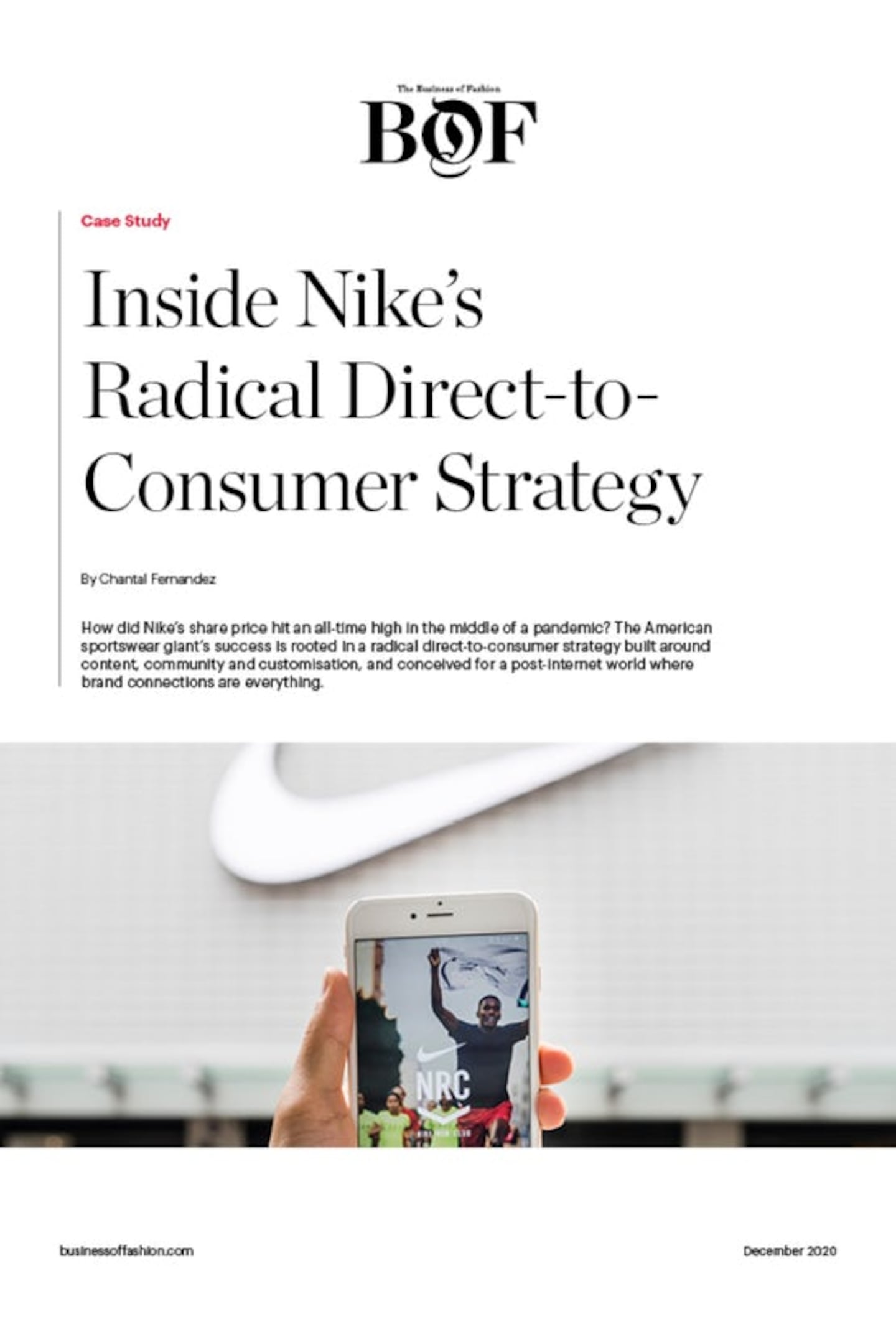
- Chantal Fernandez
In October 2020, in the middle of a global pandemic that had infected 188 countries, causing record sales damage across the retail sector, Nike’s share price hit an all-time high.
Like other retailers, Nike had been forced to close most of its network of more than 900 stores across the world, as had its key wholesale partners like Nordstrom and Foot Locker.
But the American sportswear giant’s performance during the pandemic, when its online sales spiked, signalled to many that Nike had the competency to prosper long term, in a future that will be increasingly defined by e-commerce and digital brand connections.
It was a validation of a strategy that Nike prioritised three years ago, dubbing it “Consumer Direct Offense,” but the seeds of the approach go back almost a decade.
ADVERTISEMENT
Above all, Nike is a marketing company. It doesn’t just sell sneakers; it sells the brand aspiration that imbues those sneakers with meaning. But to achieve the reach required to scale its business, Nike’s distribution strategy had long-relied on third-party retailers to sell its products, even if the consumer experience offered by those partners diluted its brand.
But in a future increasingly defined by e-commerce, fast-moving trends and, above all, the rising power of branding to drive consumer preference when competitors are just a click away, Nike realised that in order to thrive, it needed to take control of its distribution to better manage its brand and deepen its connection with consumers.
It was definitely architecting a new retail, and a bold, retail vision for Nike.
Such an evolution is easier said than done, especially for a business as large as Nike in a category as competitive as sportswear. But by radically cutting back on its wholesale distribution and raising the bar for brand experience with the third-party partners that remained; expanding its focus on content, community and customisation to keep customers close; investing in its data analytics and logistics capabilities; and rethinking the role of the store as a brand stage, Nike drove a veritable direct-to-consumer revolution.
When the pandemic hit, these shifts went into overdrive.
“It was definitely architecting a new retail, and a bold, retail vision for Nike,” said Heidi O’Neill, Nike’s president of consumer and marketplace, and one of the most prominent executives leading the brand’s new strategy in recent years. “But it started with our consumer, and we knew that consumers wanted a more direct relationship with us today.”
In this case study, BoF breaks down Nike’s pioneering direct-to consumer strategy and how it has worked to the brand’s advantage, propelling its share price to new heights during the global crisis of 2020.
Click below to read the case study now.
- Mark Parker
- John Donahoe
- direct to consumer
- athletic apparel
© 2024 The Business of Fashion. All rights reserved. For more information read our Terms & Conditions

This Week: Retail Earnings Get Messy
Gap, Abercrombie, Lululemon and others report results this week, amid growing concerns about a pullback in consumer spending.

H&M’s Big Bet on Fashion’s Elusive Middle
In an exclusive interview, CEO Daniel Ervér outlined his strategy to turn the Swedish fast-fashion giant’s greatest weakness – its positioning above Shein but below Zara in the category’s pricing hierarchy – into a strength. It all kicks off with a collection due out next month.

This Week: Which Retailers Win When Customers Trade Down?
Macy’s is betting on refreshed stores and better merchandise even as shoppers hunt for bargains. The company will give an update on its turnaround efforts with quarterly results this week.

The Top Priority for Victoria’s Secret’s New CEO
The surprise appointment of Savage X Fenty’s Hillary Super to the top job gives the beleaguered lingerie brand one more chance to show confused consumers what it stands for.
Subscribe to the BoF Daily Digest
The essential daily round-up of fashion news, analysis, and breaking news alerts.
Our newsletters may include 3rd-party advertising, by subscribing you agree to the Terms and Conditions & Privacy Policy .
The Business of Fashion
Our products.
- Skip to main content
- Skip to primary sidebar
- Skip to footer
- QuestionPro

- Solutions Industries Gaming Automotive Sports and events Education Government Travel & Hospitality Financial Services Healthcare Cannabis Technology Use Case AskWhy Communities Audience Contactless surveys Mobile LivePolls Member Experience GDPR Positive People Science 360 Feedback Surveys
- Resources Blog eBooks Survey Templates Case Studies Training Help center
The Nike Customer Experience And The Role of Its Journey Map
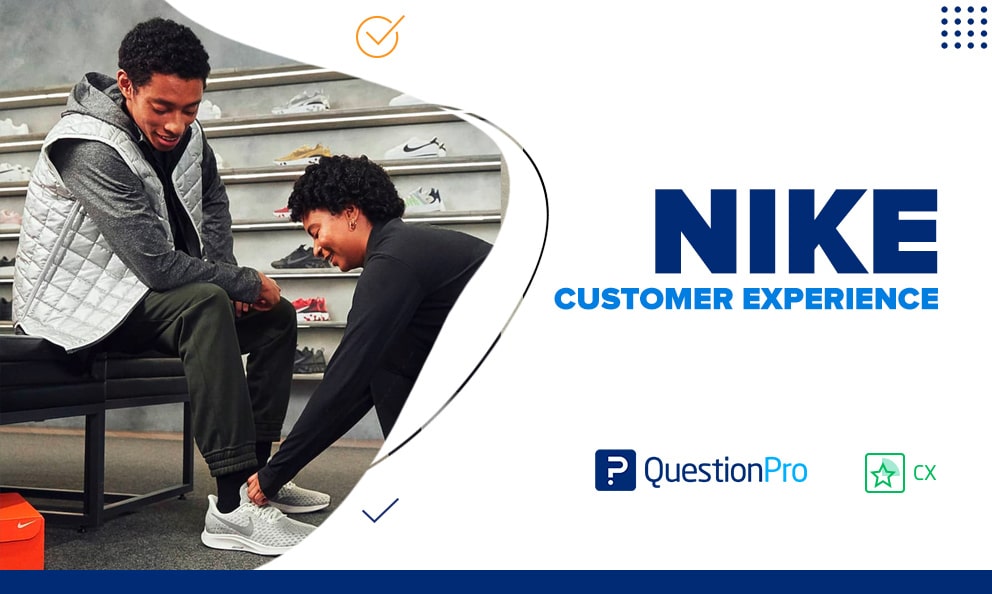
Within the fashion and apparel industry is an extremely competitive division where major brands vie for supremacy. Among them, one brand stands out not only for its incredible products or eye-catching campaigns but also for its ability to delight customers in various ways through every touchpoint that consumers experience – we’re referring to the Nike customer experience.
In this article, we will delve into the world of Nike’s Customer Experience, taking a closer look at some of their most successful initiatives, their customer journey , and some recommendations for implementing similar actions in your projects or businesses.
The Heart of Nike’s Customer Experience
At the core of Nike’s customer experience strategy lies a commitment to providing stylish products that perform exceptionally well. This commitment is reflected in their range of athletic gear, meticulously designed to cater to the needs of athletes and sports enthusiasts alike.
However, to become one of the leading brands in your industry, that alone is not sufficient. This is where customer experience strategies come into play. These are initiatives that focus on the customer journey, from the moment someone sees an advertisement or enters a Nike store to the post-purchase interactions. All of this is done with the aim of delighting their customers.
These strategies serve as the backbone of brand loyalty , reputation management, data-driven decision-making, customer retention , and global relevance. Nike’s unwavering commitment to delivering exceptional customer experiences ensures that it doesn’t just sell products; it sells a lifestyle, a mindset, and an enduring connection with its customers.
Nike has become a master of these types of initiatives and actions. In the following sections, we will explore some of the most successful ones and reflect on what we can learn from these strategies.
Examples of Nike’s Customer Experience Strategies
House of innovation.
The House of Innovation project by Nike significantly impacts the customer experience. These flagship stores, known as ‘temples to shopping in the digital age,’ blend physical and digital worlds seamlessly, immersing customers in the Nike brand’s ‘ Just Do It’ ethos. The digital integration enhances convenience and engagement with features like QR codes for virtual dressing rooms and interactive wall displays.
An important element to highlight within this initiative is personalization. Exclusive services like Nike by You offer NikePlus members one-on-one customization sessions with designers, creating unique, branded products. This elevates the shopping experience and strengthens the emotional connection between customers and the Nike brand, fostering loyalty and advocacy .
The Nike App was a game-changer for both Nike and its customers. Their App enhances the shopper experience by giving access to the NikePlus rewards program. This loyalty program offers members exclusive products, member exclusives, access to Nike experts, personalized workouts, priority access to events, and, most importantly, gives Nike insights into customers’ shopping habits and product preferences. This personalization enhances customer satisfaction and strengthens the emotional connection between consumers and the Nike brand, solidifying their loyalty and enriching their shopping journey .
Nike Live Stores
The introduction of Nike Live stores in various locations has brought a revolutionary shift to the customer experience. These dynamic spaces, beginning with the inaugural store in Los Angeles, offer customers a shopping environment that feels alive and ever-changing. Nike Live stores transcend the traditional retail model with rotating product arrays, local artwork, and interactive features like the sneaker bar and consultation services. Customers can now immerse themselves in a personalized shopping experience, trying out shoes on treadmills and enjoying the vibrant atmosphere.
Technology in Physical Stores
Nike has succeeded in providing unique experiences to people visiting their physical stores by incorporating advanced software and hardware that surprises anyone who interacts with such technology. These implementations are not merely experiential; they make the purchasing process simpler and more efficient for people. Some notable examples include:
Replica Kiosk: A digital retail kiosk with a 65″ touch display where Nike Football fans can find, customize, and order their favorite Nike team products. It provides real-time product availability for both in-store and online purchases, streamlining the shopping process and improving stock efficiency.
Nike Bootroom: An interactive surface with a 65″ multi-touch display that facilitates employee and customer interactions. It offers real-time availability information for Nike products based on size and color, thanks to RFID technology and 3D cameras.
Mobile Connect: This feature offers free WiFi in-store, promoting extensive use of digital terminals. It enables more than 1,000 interactions on busy days, often involving groups. Integrating seamlessly with the retailer’s mobile app supports customers’ journeys throughout the store and allows convenient content sharing via smartphones.
Media Wall: The multi-touch, multi-user wall serves as a dynamic information hub, displaying campaigns, products, and real-time social media updates. It aggregates content from platforms like Facebook, Instagram, and YouTube, including soccer team rankings and scores. Additionally, customers are encouraged to engage by taking selfies, which are instantly discoverable through custom hashtags.

The Role of the Customer Journey Map in a Company’s Strategy
The customer journey map is a graphic and visual representation of all the points of interaction between users and a brand. This includes any type of contact, ranging from seeing an advertisement to something as involved as making a purchase.
These touchpoints are usually organized into stages and include additional information to better understand the steps or actions a potential consumer takes.
Each of these customer touchpoints is an area of opportunity if leveraged effectively. Likewise, they can become pain points where the user experience and perception can be negatively affected. Therefore, constant monitoring of each of these points and a strategy for continuous improvement are of great importance in the growth of any business.
Example of Nike’s Customer Journey Map
Below is an example of a fictitious customer journey map for Nike, created with reference to some of the most common touchpoints in the industry and information gathered from media and specialized portals.
Nike’s customer journey map would look like this:

Stage 01: AWARENESS
| Nike.com | Customers visit Nike’s website to explore the latest products and collections. | Difficulty in finding desired items. | Enhance website navigation and search functionality. |
| Nike App | Customers download and engage with the Nike app for personalized shopping experiences. | Challenges in app navigation and product discovery. | Improve app’s user interface and recommendations. |
| Nike Stores | Customers encounter Nike’s physical stores and storefront displays. | Lack of awareness about in-store offerings. | Create captivating and informative store displays. |
| Athlete Endorsements | Customers are influenced by athlete endorsements and partnerships. | Limited knowledge of Nike’s athlete partnerships. | Highlight athlete endorsements in marketing campaigns. |
Stage 02: CONSIDERATION
| Product Pages | Customers explore product pages on Nike.com for detailed information. | Uncertainty about product features. | Provide comprehensive product descriptions and reviews. |
| Customization Options | Customers use Nike By You to personalize and design their own shoes. | Limited options for customization. | Expand customization choices and styles. |
| Nike App | Customers browse curated collections and personalized recommendations in the Nike app. | Difficulty in discovering relevant products. | Enhance personalized product suggestions. |
| Social Media Engagement | Customers engage with Nike’s social media content and interact with the brand. | Limited engagement and interaction. | Foster active and meaningful social media interactions. |
Stage 03: PURCHASE
| Online Shopping | Customers make online purchases through Nike.com. | Lengthy checkout process. | Streamline the online shopping experience. |
| In-Store Purchases | Customers buy Nike products in physical retail stores. | Difficulty in finding specific items. | Enhance in-store product organization and assistance. |
| Payment Options | Customers choose from various payment methods when shopping. | Limited payment options. | Offer a variety of secure payment choices. |
| Nike By You | Customers finalize and purchase their personalized Nike By You designs. | Complex customization process. | Simplify the Nike By You customization and purchase flow. |
Stage 04: USAGE
| Returns and Exchanges | Customers return or exchange products they are unsatisfied with. | Complicated or slow return processes. | Simplify returns and exchanges with user-friendly policies. |
| Nike App | Customers use the Nike app for tracking workouts, managing NikePlus benefits, and more. | Challenges in app navigation. | Improve app usability and guidance. |
| Customer Support | Customers contact Nike’s customer support for assistance. | Frustration with unhelpful or slow support. | Enhance customer support with knowledgeable agents. |
| NikePlus Membership | Customers utilize NikePlus benefits and rewards for enhanced experiences. | Unclear benefits or rewards. | Clearly communicate the advantages of NikePlus. |
Stage 05: LOYALTY
| Exclusive Drops | Loyal customers get early access to limited-edition product releases. | Limited opportunities for early access. | Expand exclusive release opportunities. |
| Personalized Offers | Customers receive tailored promotions and discounts based on their preferences. | Receiving irrelevant offers. | Customize offers based on customer preferences. |
| Newsletter | Customers subscribe to receive exclusive news and updates from Nike. | Lack of information about the newsletter. | Share regular and engaging insider news. |
| Feedback Channels | Customers provide feedback and suggestions to Nike. | Limited channels for voicing opinions. | Encourage and value customer feedback for improvement. |
Stage 06: ADVOCACY
| Social Media Engagement | Customers engage with Nike on social media and share their purchases. | Limited engagement and interaction. | Foster active and meaningful social media interactions. |
| Nike Run Club | Customers participate in Nike Run Club events and share their achievements. | Limited awareness of Run Club activities. | Promote and expand Nike Run Club participation. |
| Referral Programs | Customers refer friends and family to shop at Nike. | Lack of incentives for referrals. | Reward customers for successful referrals. |
| Nike Community | Customers join the Nike Community to connect with other enthusiasts. | Limited community engagement. | Create an engaging and supportive online community. |
Start Delighting Your Customers by Nurturing Every Stage of Your Customer Journey
In a market flooded with choices, consumers are not just looking for products; they seek an emotional connection with the brands they choose. This is where the customer experience comes into play and becomes a differentiator that positions brands like Nike above others, even if they offer equally good products.
These types of strategies are not exclusively reserved for large corporations; in fact, they are something that all companies should implement regardless of their size or revenue. The rewards of doing so are numerous and impossible to ignore, especially if you aim to build a base of loyal and happy customers.
QuestionPro has developed an entire suite of tools and solutions to help you implement a successful customer experience strategy.
Among the most notable are:
QuestionPro CX, our Customer Experience Management Software,
A platform with everything you need to delve into the minds of your customers and understand their satisfaction levels. Thanks to features like our ticketing system and survey platform , you can identify opportunities within your customer journey to delight your users at every stage.
QuestionPro SuiteCX
A platform with everything you need to create customer experience journey maps and perform journey analytics in a simple and effective way. You can integrate various data points, user persona profiles and easily edit them to create action plans and detailed contact strategies.
If you’re interested in learning more about our solutions and how QuestionPro can help you empower your business, please contact us. We’d love to chat with you and find the best way to execute your projects with our technology.
MORE LIKE THIS
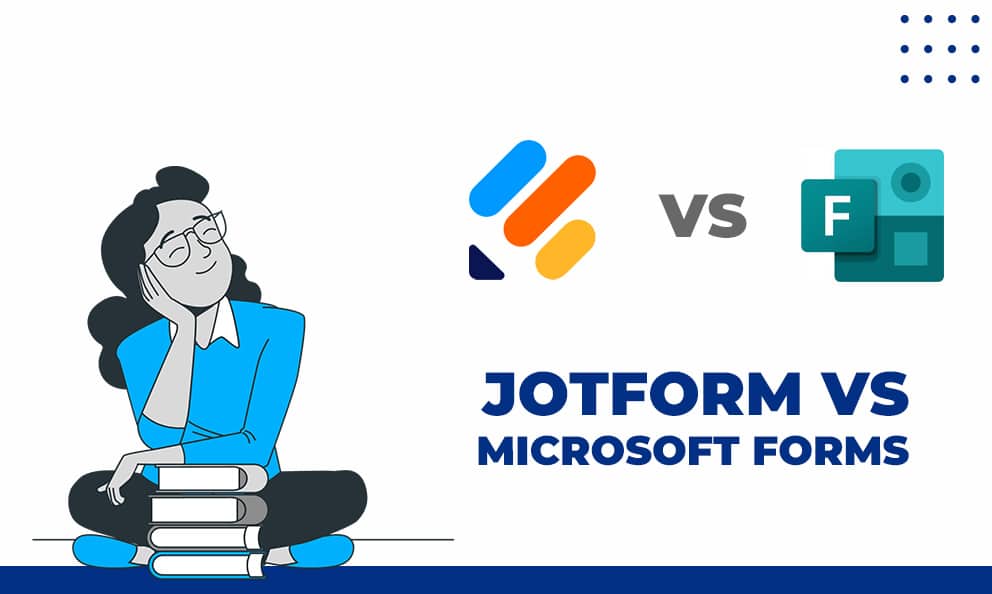
Jotform vs Microsoft Forms: Which Should You Choose?
Aug 26, 2024

Stay Conversations: What Is It, How to Use, Questions to Ask
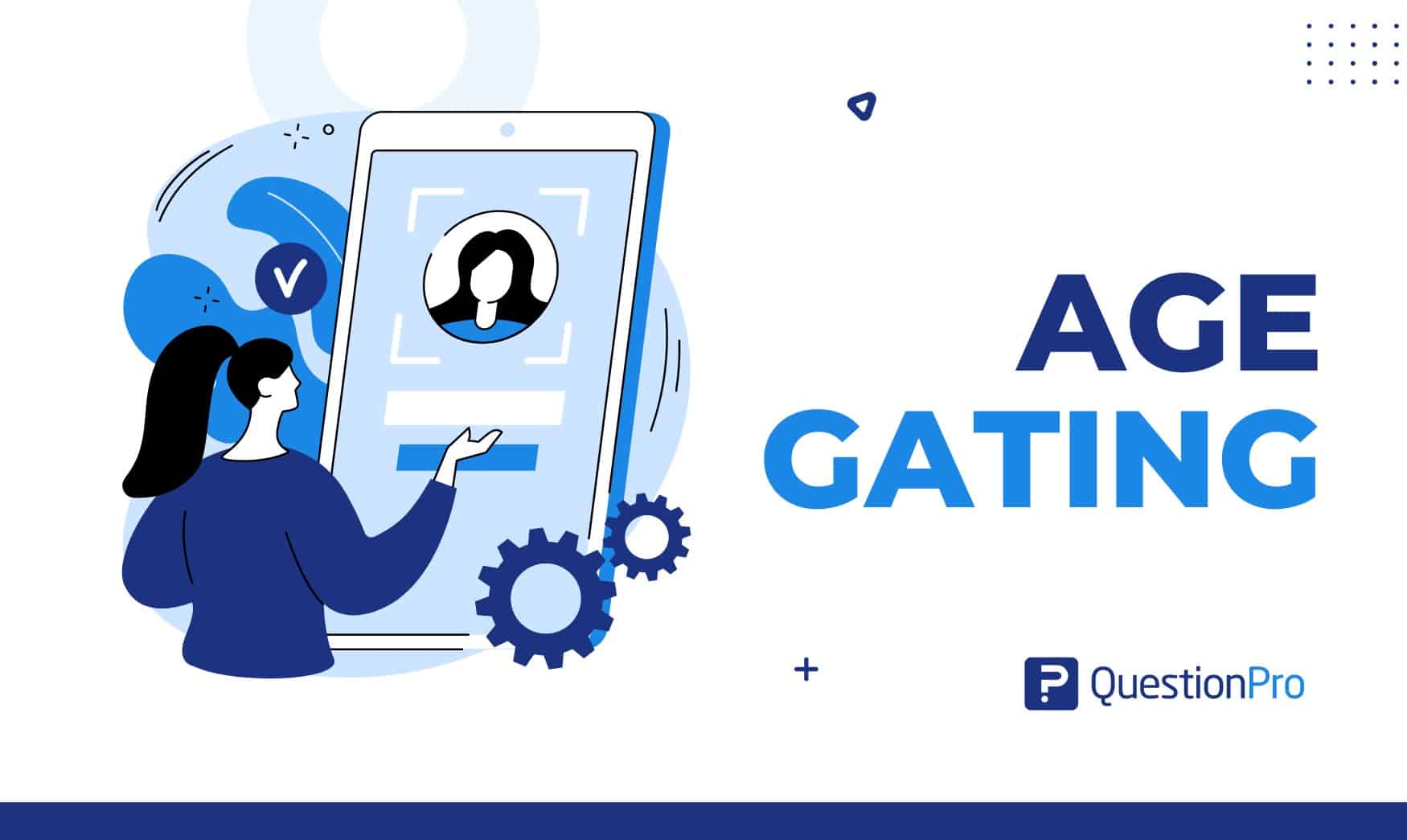
Age Gating: Effective Strategies for Online Content Control
Aug 23, 2024
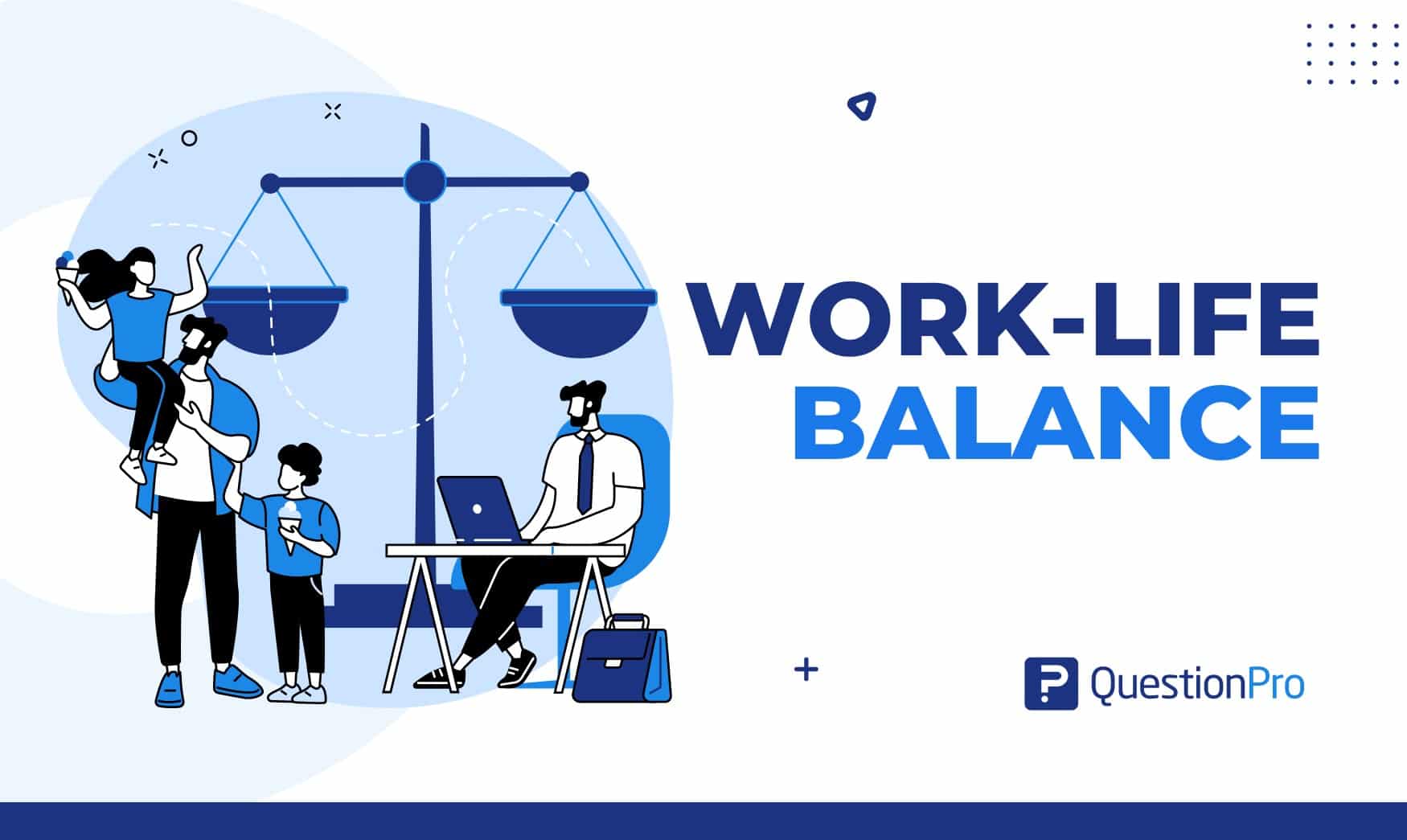
Work-Life Balance: Why We Need it & How to Improve It
Aug 22, 2024
Other categories
- Academic Research
- Artificial Intelligence
- Assessments
- Brand Awareness
- Case Studies
- Communities
- Consumer Insights
- Customer effort score
- Customer Engagement
- Customer Experience
- Customer Loyalty
- Customer Research
- Customer Satisfaction
- Employee Benefits
- Employee Engagement
- Employee Retention
- Friday Five
- General Data Protection Regulation
- Insights Hub
- Life@QuestionPro
- Market Research
- Mobile diaries
- Mobile Surveys
- New Features
- Online Communities
- Question Types
- Questionnaire
- QuestionPro Products
- Release Notes
- Research Tools and Apps
- Revenue at Risk
- Survey Templates
- Training Tips
- Tuesday CX Thoughts (TCXT)
- Uncategorized
- What’s Coming Up
- Workforce Intelligence
How Nike Combines Customer Centricity with Brand Reputation to Stay on Top

When you’re the top dog in sports apparel (an increasingly lucrative industry as consumer interests continue to shift towards athletic health and wellness trends), as well as the largest global footwear brand, it might be easy to keep doing what got you there. In 2017, Nike recognized its dominant market share across these two industries and interestingly decided that this would be the perfect time to start drastically changing some of its marketing and customer service practices. The apparel juggernaut introduced the Triple Double Strategy - promising to double its “cadence and impact of innovation,” double its “speed to market” and double its “direct connections with consumers.” The three components of Nike’s Triple Double Strategy sound nice on the surface, but one proved more profitable than the others.

Beyond strategic distribution and brand protection, Nike is also doubling down on the Nike Customer Experience (NCX) as a way to create more personal connections with customers. To make a strong customer experience a reality, Nike is investing heavily in front-line agents as part of its marketing team.
Agent (Athlete) Engagement
Nike wants their agents to “join because they love our team” said Larry Rodgers, Senior Director of Retail Concepts, at CCW Austin . “We wanted to ensure our athletes [Nike customer service agents] have a natural career path… We have many experts who then left [traditional] consumer services and then went to our social media team which is actually still part of consumer services. They can also become a product line manager, who is involved in the engineering of products, category experts, brand marketers,” and more.
Read More: Here's What to Consider When Building an Employee Experience Program

Nike Apps and Machine Learning
In addition to agent engagement, Nike is investing in customer centricity through technology, acquiring multiple tech start-ups that contributed to Nike application integration (which has led to a big increase in shoe sales). Customer service, tech, and digital marketing collaborate in using their apps to personalize consumer relationships by being the one-stop shop for anything sports related you might need, from customized workouts to AI-based algorithms for shoe recommendations.
Besides its 30-day wear test (“30-DAY FREE RETURNS DIRT AND ALL,” as stated on the Nike website), some of Nike’s most popular customer benefits include access to the Nike Plus rewards program, which offers exclusives and early access to new products, access to Nike experts for whatever sports-equipment recommendations you or your kids play, and personalized exercise regimens.
Read More: 3 Companies Capitalizing on Predictive Data Algorithms
In addition to AI-based individualized features on the Nike app, the Nike Fit app is dominating customer service in the footwear industry, snapping a picture of customer’s feet using their phone to get perfect shoe size for every style of Nike shoes. According to Nike Fit, the app uses “computer vision, data science, machine learning, artificial intelligence, and recommendation algorithms” to measure “the full shape of both feet, offering the ability to know your truly perfect fit.” Nike’s approach embodies the notion of customer-centric innovation; it is using advanced analytics and machine-learning to create actual value for customers. This is not innovation for innovation’s sake — it’s advancement for the customer’s sake.
In a way, Nike is going “big picture” and “small scale” at the same time. On the one hand, it is functioning as a one-stop-shop for its target customers (through training and workout recommendations in addition to apparel and footwear), essentially adapting the Amazon model to the world of athletics. On the other hand, it is leveraging people, process and technology to create special, personal connections with customers.
To put it simply, Nike doesn’t just sell products. It tells customers what they want — and then makes that value readily available. The key is Nike’s ability to cultivate customer trust. Between its brand legacy, its knowledgeable team and its commitment to the entire athletic experience, Nike proves it knows athletes. With personalized recommendations, it then proves it knows individual customers. This one-two punch puts Nike in the unique, coveted position of consistently anticipating and meeting customer needs. It allows Nike to “Just Do It.”
Upcoming Events
Ccw healthcare exchange september 2024.
September 04 - 06, 2024 The Grand Hyatt Tampa | Tampa, FL

All Access: Customer Insights & Data Analytics 2024
September 10 - 17, 2024 Free CX Network Webinar Series

Modernizing Service Experiences With AI & Digital
September 10 2024 | 12 PM ET Online

CCW Europe Summit
October 07 - 09, 2024 The Passenger Terminal & Mövenpick Hotel Amsterdam City Centre

All Access: Customer Data Analytics APAC 2024
October 08 - 09, 2024 Free CX Network Webinar Series

GovCC: 22nd Annual Customer Contact Week for Government
22 - 23 October, 2024 Legends Room, Melbourne Cricket Ground, VIC

Subscribe to our Free Newsletter
Insights from the world’s foremost thought leaders delivered to your inbox.
Latest Webinars
Webinar: charting the future of cx: insights and strategies from leading reports.
2024-07-11 02:00 PM - 03:00 PM EST

Webinar: Hot Wins: How Thrasio Uses AI and Automation to Achieve Top 1 Percent Operational Excellence
2024-06-18 02:00 PM - 03:00 PM EST

CX Talks: Is generative AI living up to the hype?
2024-05-29 02:00 PM - 03:00 PM SGT

RECOMMENDED

FIND CONTENT BY TYPE
- Market Studies
- Special Reports
- Seminar Series
CCW Digital COMMUNITY
- Executive interviews
- Cookie Policy
- User Agreement
- Partner With Us
- Become a Member Today
- Play to Win
ADVERTISE WITH US
By partnering with CCW Digital, you’ll increase brand awareness, position yourself as a thought leader, introduce your solution to the market, make executive connections, while generating new leads. Based on your business goals, our analysts can help align your company with the right opportunity.
JOIN THE CCW Digital COMMUNITY
As the world's largest customer service online research hub, CCW Digital provides 170,000+ members with the tools to optimize their customer contact operations. Through market study reports, seminar series, webinars, and a variety of other media, we’re driving this year’s critical conversations on Generative AI like ChatGPT, automation, agent engagement, self-service, personalization and more.

Contact Us | About Us
Become a Member today!
PLEASE ENTER YOUR EMAIL TO JOIN FOR FREE
Already an IQPC Community Member? Sign in Here or Forgot Password Sign up now and get FREE access to our extensive library of reports, infographics, whitepapers, webinars and online events from the world’s foremost thought leaders.
We respect your privacy, by clicking 'Subscribe' you will receive our e-newsletter, including information on Podcasts, Webinars, event discounts, online learning opportunities and agree to our User Agreement. You have the right to object. For further information on how we process and monitor your personal data click here . You can unsubscribe at any time.
More From Forbes
Nike is setting the standard for omnichannel loyalty in every industry.
- Share to Facebook
- Share to Twitter
- Share to Linkedin
Most marketers understand that earning loyalty is bigger than rewards programs and incentives. That it’s important to treat different customers differently. And they agree that a loyalty program should deliver the best content, offers, and experience that a brand has to offer.
But, making the shift from loyalty as a standalone marketing practice to something that is tightly integrated with the customer experience is hard. And companies struggle with many of the fundamentals that make it possible — such as understanding customer interactions across channels, delivering a consistent experience, and collaborating with internal groups like eCommerce and customer service.
Enter Nike.
Membership in NikePlus, which it bills as “the very best of Nike”, is at the center of Nike’s direct to customer growth strategy. The 170M members of the program get benefits for both shopping and using its family of apps. There are three things that set Nike’s approach apart:
- Loyalty has a higher calling than a promotional firehose. Nike prioritizes loyalty and membership as part of the company’s corporate strategy for growth. In his FY2019 letter to shareholders, Mark Parker referenced members and membership six times and attributed 35% growth in digital revenue to the expansion of the program.
- Exclusivity, access, and innovation are front and center. NikePlus members get access to shopping perks like free shipping but the emphasis and focus is on access and exclusives rather than percent off. It consistently tests new kinds of partnerships and benefits to keep the program fresh and exciting. For example, in November it introduced “Member Days,” where program members could get unlock a new benefit – such as free gift with purchase, rewards for doing a working in Nike’s training apps, or first access to the new Kyrie 6 shoe — each day for six days.
- Member insights impact omnichannel experiences . The member experience and exclusive offers aren’t just limited to mobile, web, and email. Nike brings membership to life in its stores as well with express checkout, special store hours for members, and a members-only floor at its flagship store in NYC. It’s also using member data to enhance the value it delivers for members through hyper-localized store formats: at the end of October, Nike expanded its Nike Live concept with two new stores in Long Beach, CA and Tokyo, Japan.
Nike may be setting a new standard for loyalty, but the uptick in retail loyalty program revamps I’ve seen in the past 18 months tells me that other retailers are paying attention and investing in program evolution too. Stay tuned, you’ll be hearing more from us about retail loyalty in 2020.
This post was written by Principal Analyst Emily Collins, and originally appeared here .
iPhone 16 Release: Apple Confirms Special Event, On A Surprise New Date
‘exciting updates’—new details of donald trump’s mystery crypto project spark wild bitcoin rival speculation, this ‘ted lasso’ star is reportedly not returning for season 4 as series regular.
- Editorial Standards
- Reprints & Permissions
To read this content please select one of the options below:
Please note you do not have access to teaching notes, co‐creating value through customers' experiences: the nike case.
Strategy & Leadership
ISSN : 1087-8572
Article publication date: 5 September 2008
This case aims to demonstrate how leading firms are learning how to sustain competitive advantage by co‐creating experiences of value with customers.
Design/methodology/approach
The shoe company Nike provides a glimpse of the next “best practices” of value co‐creation with customers. By engaging with informed, connected, and networked customers around the globe, Nike has found their shared experiences to be a new source of value.
The paper finds that customers are now informed, connected, networked, and empowered on a scale as never before, thanks to search engines, engagement platforms, the growth of internet‐based interest groups, and widespread high‐bandwidth communication and social interaction technologies. Customers have learned how to use these new tools to make their opinions and ideas heard.
Practical implications
A few leading companies like Nike are involving customers in the value creation process by offering Internet sites where they can share their interactions and experiences. These range from customers' ideas about how to improve or customize products to their feelings when they use products.). For Nike, the learning from these interactions creates new strategic capital. The company can now learn directly from customers' direct input on their preferences. Nike can build relationships and trust with the Nike+ community and experiment with new offerings, all the while enhancing its brand.
Originality/value
The strategic opportunity for Nike is to build and promote the use of Internet engagement platforms through which the firm can build customer relationships on a scale and scope as never before. Effectively managing these new initiatives initially posed a new challenge for Nike, a traditionally product‐centric organization. Now their viewpoint is reversed. “In the past the product was the end point of the consumer experience. Now it is the starting point.”
- Value added
- Customer information
- Social interaction
- Consumer marketing
- Customization
Ramaswamy, V. (2008), "Co‐creating value through customers' experiences: the Nike case", Strategy & Leadership , Vol. 36 No. 5, pp. 9-14. https://doi.org/10.1108/10878570810902068
Emerald Group Publishing Limited
Copyright © 2008, Emerald Group Publishing Limited
Related articles
All feedback is valuable.
Please share your general feedback
Report an issue or find answers to frequently asked questions
Contact Customer Support

- View All Services
- Branding Services
- Logo Design
- Brand Identity
- Graphic Design
- Brand Marketing
- Custom Website Design
- Shopify Website Design
- WordPress Web Design
- Magento Web Design
- eCommerce Web Design
- SEO Services
- Social Media Marketing
- Consulting Services
- Before & After Designs
- Case Studies We Value The Results We Create For Our Clients
- Before After
- Auto Repair Website Design
- Bank Website Design
- Corporate Web Design
- Construction Web Design
- Dental Web Design
- Family Law Attorney Website Design
- Financial Advisor Website Design
- Gym Web Design Agency
- Healthcare Website Design
- Hotel Web Design
- HVAC Web Design
- Law Firm Web Design
- Manufacturing Website Design
- Plumber Web Design
- Restaurant Web Design
- Real Estate Website Design Company
- Venture Capital Website Design
- Digital Trends Get In-Depth Insights Into The Latest Digital Trends
- About Proven Industry Leadership & Recognized Results
- Contact Get In Touch With Us
How Nike Customer Experience Uses Artificial Intelligence To Improve Engagement & Personalization
Artificial intelligence helps Nike's customer experience take product customization to another level. Find out how Nike uses AI to engage customers.
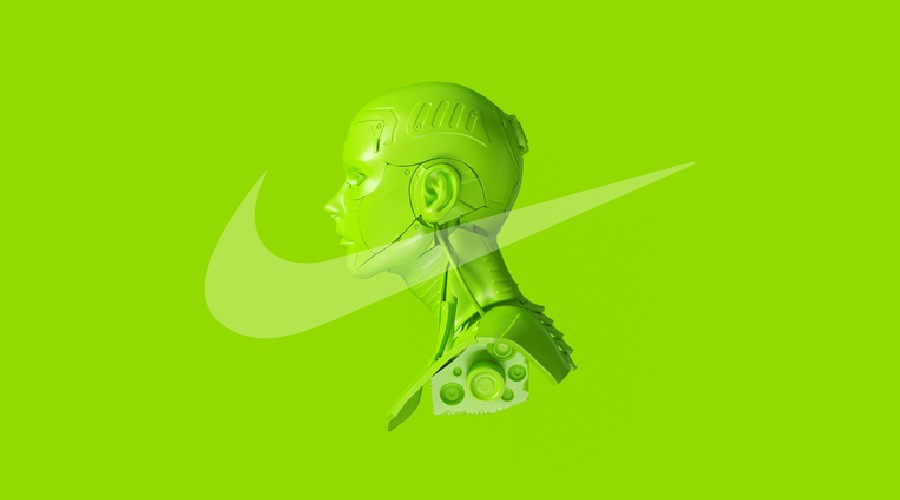
Nike, the world’s largest sports apparel company, is at the top of its game. Thanks to artificial intelligence (AI) that fuels its customer engagement efforts, the brand is still growing in more than just revenue.
Worldwide spending on AI systems and research hit $154 billion in 2023 alone.
A general sentiment about AI in the retail business is that it forms closer ties between brands and their users, while reshaping the customer care segment.
Some of the Nike customer experience key features that AI is impacting significantly are:
- Personalized Recommendations
- Life-like Virtual Assistants
- Better Scalability Through AI Data
- Contextual Relevancy Aids Personalization
- AI-Based Insight For Betterment Of Customer Activation
This article will take a studious look into how AI helped Nike’s customer experience strategy grow. We will also look at some of the most revolutionary Nike artificial intelligence applications that may become a norm in the near future.
Table of Contents
Nike Customer Experience, Artificial Intelligence & Product Personalization: A Case Study
Nike and avantgarde tech go back a few years together.
One of the most astounding examples of customer care and artificial intelligence symbiosis comes straight from their workshops.
In 2015, the Nike brand acquired a patent based on an Augmented Reality Design System. This paved the way for the application of holographic technology into sneaker design.
A year later, they invented self-lacing shoes – inspired by the iconic footwear from the movie “Back to the Future.”
As Matt Wujciak of Customer Contact Week Digital writes, health and wellness are becoming more prominent points of interest of millions, and consumers everywhere are buying sports equipment like sneakers in increasing volumes.
In such a climate, Nike could be forgiven if they kept doing what they were already doing and just reaped the rewards (revenue).
But that’s not the foundation of long-term success for any business. Knowing that mixing things up is best while at the top, Nike announced the Triple Double Strategy in 2017.
What it entails is the following:
- Doubling the impact of innovation
- Doubling their market speed
- Doubling direct connections with consumers
Nike’s special focus was on the customer connection, which yielded some truly impressive results.
The end goal? More consumer engagement, employee loyalty and business longevity.
Here is what Nike did.
How Nike’s House Of Innovation Revolutionized The Brand’s Retail
In 2018’s Q3, Nike apps contributed to over 60% of digital business.
It began in April 2018 with the acquisition of Tel Aviv-based computer vision firm, Invertex Ltd.
This move was pivotal in Nike’s securing of new digital platforms and complemented another the previous buy of Zodiac Inc – analytics and consumer data company.
The Invertex buy was met with proclamations of building “groundbreaking innovations to help Nike serve millions of members around the globe.”
Nike’s Chief Digital Officer further commented that this business maneuver would “further the company’s capabilities in computer vision and artificial intelligence,” promising “the most compelling consumer experience.”
The Nike artificial intelligence revolution continued with another purchase on August 5th 2019:
“Nike announced its acquisition of Celect, a predictive analytics company founded in 2013 in Boston. The acquisition is the latest in a series of deals made by Nike to improve their new strategy of selling directly to customers. Celect’s technology will be integrated into Nike’s app and website. Celect’s technology also allows Nike to have the proper inventory to meet customer demands.” – Rebellion Research
The Nike brand wanted to shift its business strategy towards direct sales to customers. To that end, digital design studio Virgin MEGA helped Nike launch the SNKRS app.
This was a basis for Nike’s House Of Innovation : a “blueprint for future retail locations,” integrating digital and physical retail into a single store.
Nike Customer Engagement & Personalization Of The Buying Experience
The brand’s New York flagship store “knows” all there is to know about their customers who enter it and log into the app: their color preferences, their favorite sports, their foot size and so on.
Nike’s customer engagement program uses this info to provide a personalized customer experience of the highest order.
The data, collected via the app, is used by Nike to decide which sneakers to stock in which retail stores and, more broadly, what future direction the company should take.
Their shoppers can also scan clothes in the shop and send requests for a piece of desired clothing to be sent to a fitting room in their exact size.
Nike Maker Experience & Nike By You
In IBM’s January 2019 publication, “ The coming AI revolution in retail and consumer products,” Nike’s artificial intelligence efforts got a great amount of attention.
It explained the automated process behind the sports apparel company’s custom-designed sneakers.
As a way of engaging with its customers, delivering on their expectations and making it possible for buyers to create their own pair of dream sneakers, Nike developed a system dubbed “The Nike Maker Experience.”
This system made designing one’s shoes almost instantaneous. It allowed the customer to make their own sneakers and leave the retail location wearing them!
The process is wonderfully futuristic and beyond convenient:
A pair of blank Nike Presto X sneakers is placed within a system. The customers choose the colors and graphic elements they’d like to add to their customized Nikes. And all this through voice activation commands!
“The Nike Maker Experience” makes use of artificial intelligence, object tracking and projection systems to create the desired product, 100% tailored by the buyer, according to their tastes.
The final product is completed in less than two hours. For the sake of comparison, the standard sneakers customization procedure – with client communicating their wishes to the brand – takes two weeks.
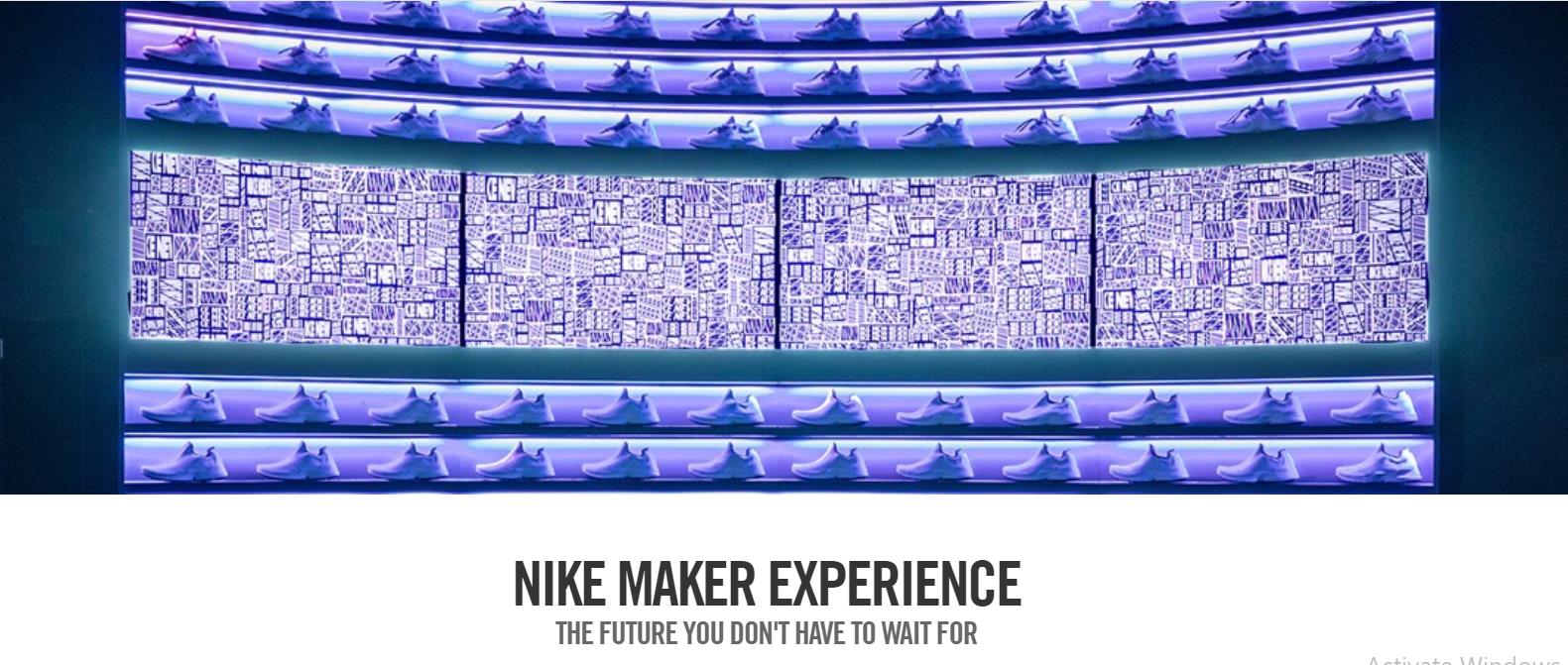
By personalizing the customer experience through customization of every single element of their shoe, Nike is able to attract even the most indifferent of demographics to their products.
The brand has taken on numerous brand ambassadors – musicians, sports figures, street artists, lifestyle influencers and others – to promote this industry-leading feature.
They also design their own, ready-made sneakers, that Nike places on their online store for display and for customers to purchase.
That’s the integral part of the “Nike By You” lifestyle scheme, which entails complete customization of products with an almost unlimited range of bespoke signature elements – all through the power of AI.
Once the customer has designed their shoe online, they can save it on Nike’s website, get an instant shareable link and share their own, personal Nike sneakers with their friends on social media.
The possibility of sharing a product socially enhances customer satisfaction and user experience – all part of Nike’s customer-centric policy.
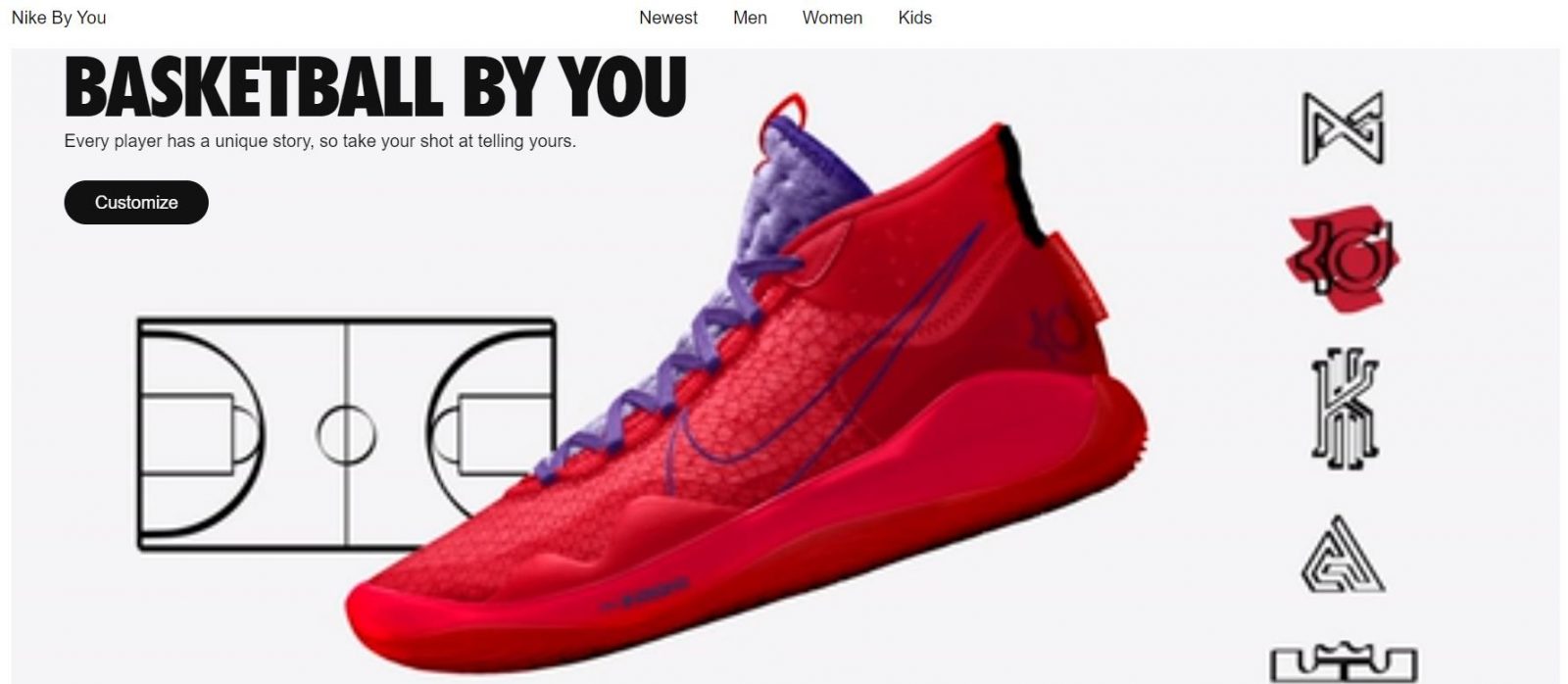
How Artificial Intelligence & Customer Engagement Improved Nike’s Brand Reputation And Customer-Centricity
90% of all the Big Data in the world was made in the last few years.
Artificial intelligence is capable of capturing the Big Data that is reshaping the landscape of online and retail stores in more than one way.
Big data and AI have given rise to personal (virtual) shopper assistants.
These virtual assistants can:
- Facilitate the use of voice and image searches
- Analyze customer’s preferences and their history of behavior
- Make predictions for sales and segmentation
- Analyze reviews
- Process orders
- Suggest solutions and answers to questions etc.
Virtual assistants are also sometimes called chatbots – and Nike is already capitalizing on them, by boosting the conversion rate from retail campaigns.
The company is extensively using data algorithms to cultivate customer trust.
Customer trust and loyalty are intertwined and dependent on each other – which is why Nike went one step further, which led to a notable rise in shoe sales.
The brand is constructing a conglomerate of personalized customer relationships via “one-stop shops” for custom-tailored workout regimens and shoe recommendations based on AI algorithms.
As an example, the company developed the “Nike+” program for loyal customers , offering them an exclusive sneak-peak into new and future releases.
They are also allowed, through this AI-based individualization scheme, to engage with experts for equipment recommendations.
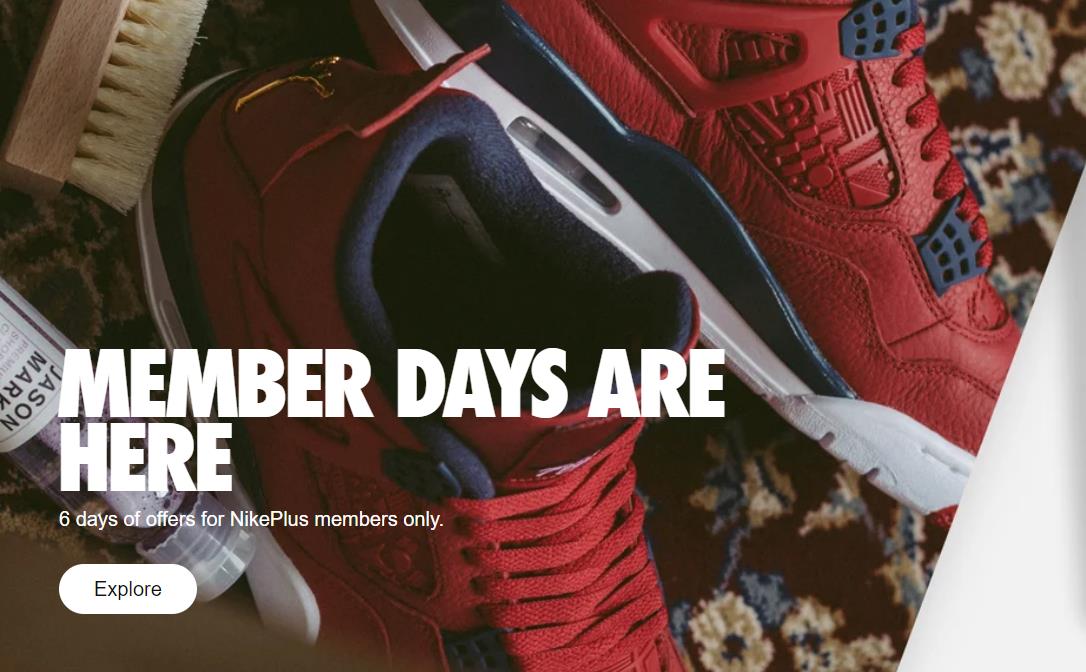
Nike Fit: Augmented Reality App For Scanning Customers’ Feet
Nike rolled out the Nike Fit app as a part of their individualization agenda. Augmented reality-infused technology takes a snap of customer’s feet and, with absolute precision, measures them.
The goal is to get the perfect shoe size for the buyer, who may be making the purchase out of the comfort of their own home (away from retail location) without fearing whether they got the size right.
Nike Fit uses a smartphone camera to capture and scan customer’s feet using these AI elements:
- Computer vision
- Data science
- Machine learning
- Recommendation algorithms
The whole process takes just a few seconds. It is a superior method of measuring a person’s foot because it takes into account its entire morphology and anatomy, rather than just length and width.
Once the foot is scanned, Nike treats its customers with a “best fit for you” recommendations.
A product personalization program is completed in the app: once you search for shoes to buy after measuring your feet, you will only see your size for any given pair of sneakers in the store.
Nike Fit reshapes not only the way their shoppers experience shoe purchases while getting high-end service, i t also helps Nike be more accurate in designing and manufacturing their products.
The Impact Of Nike’s Customer Engagement Program
Nike’s customer engagement combines mass-produced retail stores with interacting with individual customers and AI technology to communicate their products in a more personal way.
They do this through:
- Ready-made products
- State-of-the-art apps and customization programs
- Rewarding loyalty schemes
- Retail shops that blur the line between physical and virtual experiences
The outcome is the cultivation of customer trust and the creation of brand integrity and recognition that will turn to legacy.
Nike’s artificial intelligence program not only anticipates customers’ needs and helps the brand meet them – it communicates to the customers that what they truly want is possible and achievable; t hat they themselves can partake in designing a product fit only for them.
Nike’s yearly revenue amounts to $51.5 billion . Investments in AI have helped grow the revenue share through the Nike Direct segment (brand’s site, app and stores combined).
The shift towards direct sales to consumers led them to rise from $9.08 billion in 2017 to $21.3 billion in 2023. Direct revenue now contributes to almost half of Nike’s profits and this number continues to climb.
The key to these turnover figures was in the company’s many innovations – “Nike House of Innovation” being the most prominent one.
The brand’s artificial intelligence technology is used for customer cultivation: to satiate the consumers’ hunger for experiences, personal and responsive retail environment.
What these products and services enhanced by AI, big data and recognition algorithms are making possible is:
- Improved personalization: Artificial intelligence is pushing Nike’s business – as it does the entire fashion segment – towards selling directly to customers, cutting out the middle-man, and offering a fully customizable, experiential shopping.
- Empowering self-service: AI changes the notion of waiting for your turn to be serviced and your product to be delivered. Chatbots are already handling the majority of customer queries online.
- Constant availability: Services powered by AI, such as virtual assistance agents, don’t go to sleep. The 24/7 availability is one of the most sought after qualities in customer care but was also the one that was hardest to procure until AI appeared.
- Virtual assistants provide happy experiences: Client courtesy is always a guarantee with virtual assistants and chatbots. Real-life customer representatives may have a bad day – whereas with AI, the company is sure to always have a “smiling” assistant providing a quality user experience.
- The consumer becomes the ultimate signal of demand: Thanks to big data and machine learning algorithms, the brand continues to close the gap between them and the consumer.
When Invertex purchase was announced, Nike’s Chief Digital Officer, Adam Susman, proclaimed that the company’s goals of personalization were only shaping up.
The addition of “world-class data-science talent and best-in-class tools” was to be used to “power one-on-one relationships with consumers through digital and physical consumer experiences.”
Nike Artificial Intelligence & Customer Engagement Takeaways: What’s In The Future?
Nike’s website gets 180 million visits per month, with 9 minutes being the average time spent by visitors.
In an interview for Particle Data website, Heidi O’Neill, president of Nike Direct in charge of eCommerce and direct retail, revealed what artificial intelligence and machine learning mean for the company in the long run:
- The curation of completely personalized stores for every single shopper in the future, by looking at every retailer and their specific consumer relationship
- Innovations like audio-guided run in Nike Run Club app track running stats
- Using big data to know where Nike consumers are and to select and curate products in stores accordingly
- Using data science to identify and invite high-value consumers to exclusive events, such as guest spots by top designers in House of Innovation store
Nike CEO Mark Parker has previously stated that the success of NYC and Shanghai flagship shops exceeded all expectations – and he had AI and ML to thank.
“Both stores create the most personal and responsive retail environment in the industry. It’s a digital experience brought to life in a physical space, ” comments Parker.
Based on announcements by Nike’s top executives, further personalization, customer engagement – with a dash of exclusivity – will remain a company’s priority.
When it comes to exclusivity, House of Innovation’s mythical 5th floor is reserved for Nike+ members only.
But other than housing exclusive gear, it’s also symbolic of the brand’s direction: transparent benefits for all who simply choose to engage themselves up a notch. Also, a Nike+ membership is free of charge.
The company is already mulling the development of their digital customer experience in these three ways:
- Building customer relationships through mobile apps
- Career advancement for store and customer support agents
- Implementation of AI innovation via Voice of Customer
This final point offers a most immediate glimpse into the future. Nike Live is a promise of a “hyper-localized” customer experience – an ecosystem of sorts, bolstered by consumer research through a Voice of Customer program.
The entire experiential concept is centered around a smartphone app which is in charge of member’s loyalty points and information on products.
The futuristic retail concept, located in Los Angeles, is available for Nike+ members only and traces buying patterns and customer engagement typical of the area the store is in. Another location is in plans for Tokyo.
" * " indicates required fields
Matt is a seasoned IT professional with nearly two decades of experience in product development, strategy, and system architecture. His commitment to transforming businesses and enhancing their digital presence has led to strategic initiatives that consistently exceed client expectations. Matt has been instrumental in launching successful projects for leading global brands, significantly advancing their objectives and revenue. Drawing on his experience as a full-stack engineer, Matt navigates complex technical challenges with ease. He stays ahead of industry trends, fosters a collaborative work environment, and mentors teams to success. His strategic approach and diverse expertise in business and technology enable him to deliver innovative solutions and tangible results in demanding situations.
Categories (tags):
Related Resources

- Web Design & Development
10 Best Contact Us Page Designs + How To Design A Page That Converts

10 Best Small Business Websites In 2024

10 Top Kinetic Typography Examples [+ Patterns & Best Practices]

- Digital Marketing
12 Types Of Marketing Collateral (+ Examples)

13 Brand Elements To Include In Your Brand Book & Strategy [With Examples]

- eCommerce Design
15 Best eCommerce Tools To Grow Sales In 2024
- Content Marketing
- Paid Advertising
- Performance Creative
- Crypto & Blockchain
- Case Studies
- Press & Media
- Write for Single Grain
- General Inquiries
- Leveling Up Podcast
- Marketing School Podcast
- Executive Mastermind
Boost Your Brand
Just Do It: What We Can Learn from Nike’s $39B Marketing Strategy
With over 1.15K stores globally, 76.7K employees, and $39.12 billion in yearly revenue, it’s safe to say that Nike is at the top of the game right now.
What is it like to be the largest sneaker maker who keeps sales surging as the global economy slows? I’ve spent three wonderful days rambling around Nike’s website and discovered that it is chock-full of emotions, real people, and true-to-life experiences inside. The site also boasts:
- High-quality images
- Full-screen background videos that send chills down your spine
- Emotions and people expressing them openly
- Social values
- And, oh, the swoosh!
All that (and, I believe, a lot more!) makes Nike’s marketing strategy so madly effective.
Let’s take a closer look at the tactics that Nike uses to build brand awareness and expand globally.
Nike’s Strategy: Overview, Stats & Facts
Everyone knows Nike. Even your granny does. But hardly anyone understands how mighty it is compared to other global brands out there, like Adidas, for instance.
So before we start digging into Nike’s digital marketing strategy and tactics, let me share some stats with you:
- Founded by Phil Knight and Bill Bowerman 55 years ago, Nike is now the world’s most valuable apparel brand in the world.
- Nike’s brand name is not just a senseless sequence of letters. It is named after the Greek goddess of victory , speed and strength, also known as Winged Goddess. Nike’s swoosh resembles a wing.
- Nike has the largest market share in the athletic apparel industry in North America (around 27.4% and, until recently, had a whopping 96% of the market for basketball footwear), and continues to outpace the competition when it comes to sales :

- Nike’s Air Jordan brand of basketball sneakers generated over $3.14 billion in the fiscal year ending May 2019, up 10% from the previous year.
- Nike’s designers are not afraid of being bold – as evidenced by their “green grass” golf shoes that hit the market in January 2019:
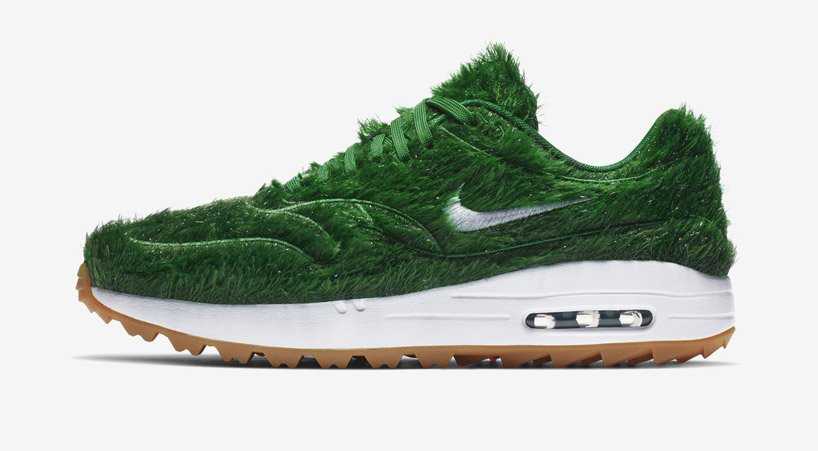
- Their SEO strategy is also up to the mark. SEMRush shows that close to 60M users land on Nike’s site monthly, spending around 7 minutes there and browsing almost 5 pages.
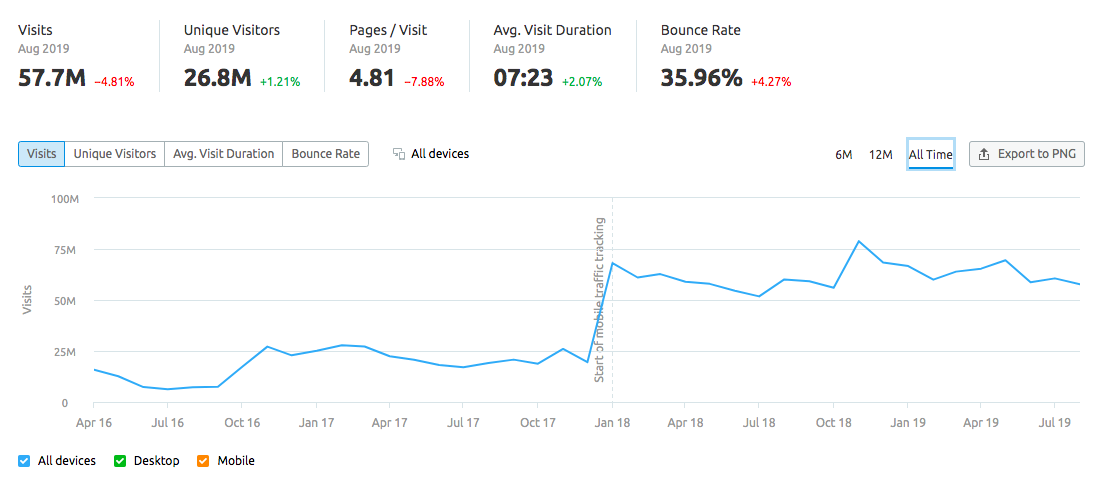
- Nike’s annual revenue keeps growing year after year. Some analysts predict that Nike’s revenue will grow by nearly 25% through the fiscal year 2021 to $45.4 billion:
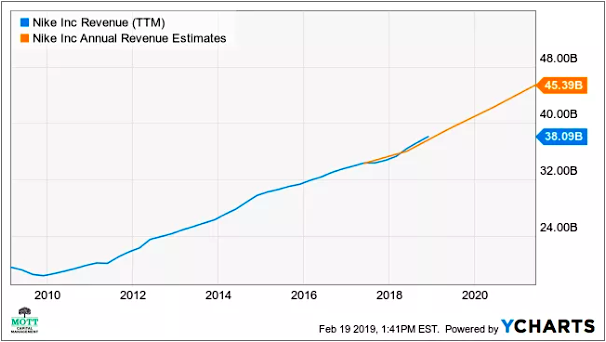
Impressive stats, right? Now let’s see what strategies Nike uses to create so much buzz around their brand and continue growing amid stiff competition.
Related Content: What Amazon’s Marketing Strategy Can Teach SMB Owners

Nike’s Influencer Marketing Strategy
What distinguishes Nike from other shoe brands is that it taps into the power of influencer marketing the smart way.
Nike’s audience is versatile. It consists of rockers and rappers, artists and thinkers, entrepreneurs, athletes and other individuals – and not just professionals, but regular people, too. So to speak to their target audience in the same language, Nike’s ad campaigns uses a voice to which their consumers are likely to respond.
There’s even a “sneakerhead” movement, of which Nike products are collectors’ items! A sneakerhead is someone “who collects, trades, or admires sneakers as a hobby. A sneakerhead may also be highly experienced in distinguishing between real and replica sneakers.”
Controversial Colin Kaepernick Ad Campaign
It’s been almost a year since Nike made Colin Kaepernick one of the faces of its ad campaigns. The ex-NFL quarterback, best known for his quiet protest against police brutality towards African Americans by kneeling during the National Anthem, posted an image of himself with a quote and the #JustDoIt hashtag:

The results were amazing. Nike saw a 1,400% surge in social media activity and earned $6 billion in sales. Although there were a lot of negative reactions (like calls to boycott Nike products on social media), as the saying goes: all publicity is good publicity.
Women’s World Cup Sponsorship
Back in July 2019, Nike turned the most-watched women’s football match of all time into a vast marketing opportunity. Although Adidas was the official sponsor of the tournament, it was Nike who seemed to be everywhere.
They sponsored 14 out of 24 teams so that more than half of all players were wearing that mighty swoosh. And when the United States beat Netherlands 2-0 to retain Women’s World Cup title, Nike was ready: Just a few seconds after the match ended, they released an ad celebrating the U.S. women’s team :
The results? Over 5.3 million views on the @nikewomen Instagram profile, almost 5 million views on YouTube, and more than 22.5 million views and 97K retweets on Twitter. And, yeah, jersey sales were 500% up in 2019 compared to the 2015 World Cup.
Partnerships with Athletes: Justin Gallegos and Serena Williams
Nike was born to inspire and motivate. That’s what they did back in October 2018 when they signed a three-year contract with Justin Gallegos , the first-ever pro athlete with cerebral palsy, thus getting lots of attention with users praising the brand:
Half a year after that, they released Dream Crazier, a video narrated by Serena Williams , an American tennis player who inspires women to not be afraid of expressing emotions, mastering “men-only” sports or being “too good”:
You can’t become the world’s most successful brand by staying in the past and refusing to keep up with the times.
Collaborations with Rap & Hip Hop Musicians
Rappers are the new athletes when it comes to Nike advertising. It all started with the official Air Yeezy and Air Yeezy II sneaker collaboration between Kanye West (whose nickname is Yeezy ) and Nike back in 2009 — the retailer’s first full collaboration with someone other than an athlete. Released in three colors, this sought-after sneaker model reflects West’s unique style :

Nike also put out a three-part Artist Series in which they collaborated with N.E.R.D (Pharrell Williams, Chad Hugo and Shay) and released their limited-edition Dunk High ‘Pharrell’ sneakers with a brain logo on the heel. (The other two additions to the series were NYC graffiti artist ESPO and actress Halle Berry.) They issued just 1,050 pairs of these sneakers (which now go for about $700!).
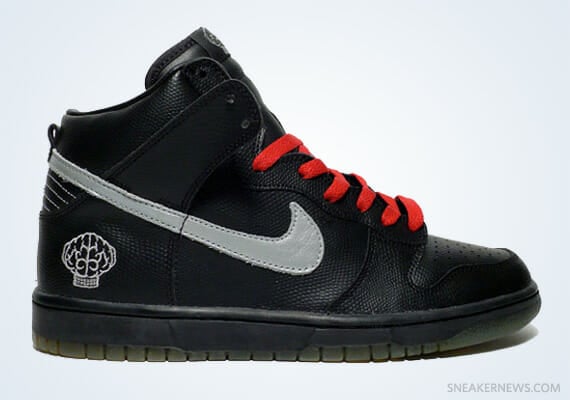
Now Travis Scott is on stage, too, with Nike Air Force 1 Low ‘Cactus Jack’ , constructed of suede, canvas and leather panels marked with abstract patterns:
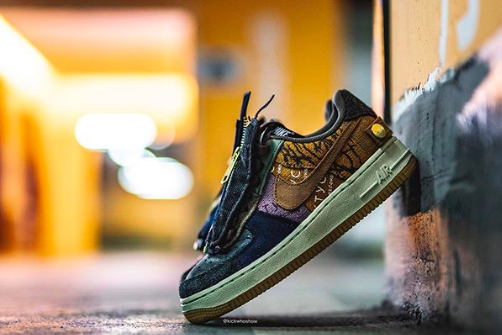
Nike also partners with up-and-coming rap musicians and other local influencers, who all contribute greatly to Nike’s brand awareness.
Partnerships with Fashion Designers
Combining sportswear with fashion, Nike develops products that become worldwide trendsetters. And fashion is nothing without fashionistas. With that in mind, Nike partners with such designers as Virgil Abloh and Tinker Hatfield.
Tinker Hatfield , one of the world’s most renowned sneaker designers, joined Nike 38 years ago and is now Nike’s VP of Design and Special Projects. He has designed many of Nike’s classic sneakers, including the Air Jordan III-XV, the Nike Air Max 1 and the Nike Air Safari, and the success of these shoes are because he wasn’t afraid of “ pushing the boundaries of technology and contemporary sneaker design…. Without Hatfield and his game-changing designs, Nike would likely be a very different company today.”
Hatfield’s newest design: the Nike React (2019) :
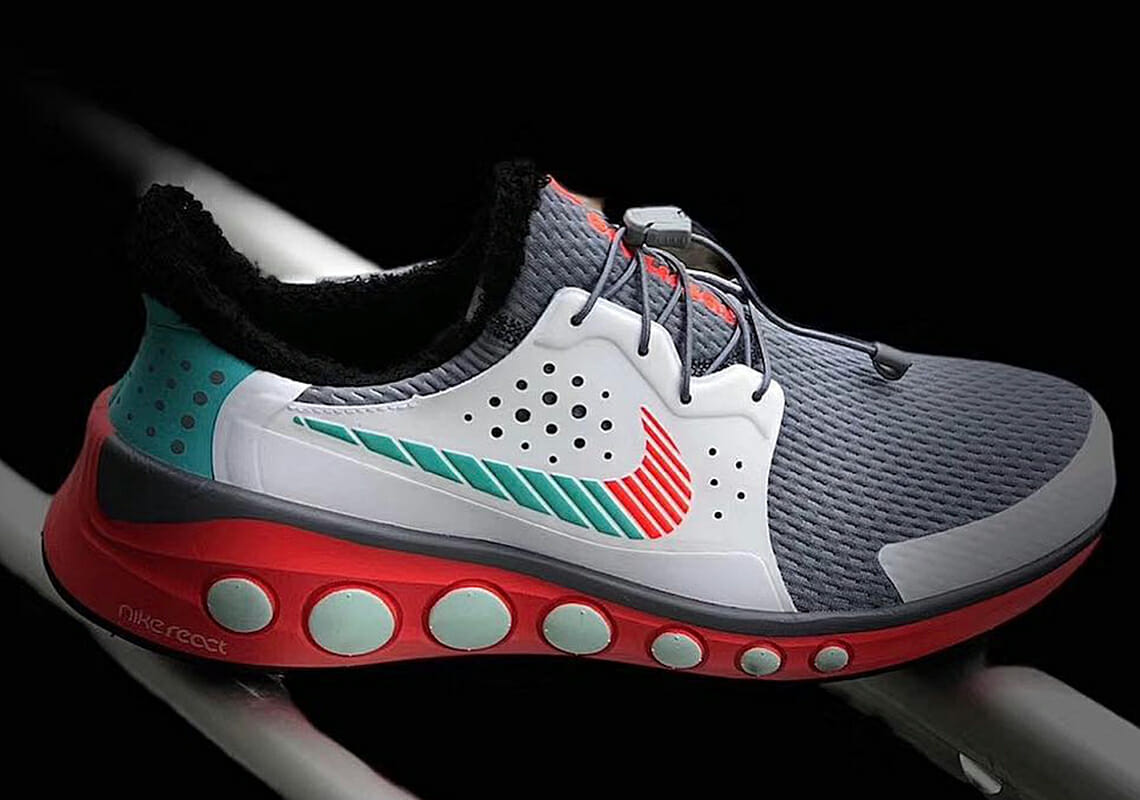
Another collaboration is between Nike and Virgil Abloh, an American fashion designer, artist and DJ who has been the artistic director of Louis Vuitton’s men’s wear collection since 2018.
He designed a collection for Nike called “ The Ten ” in which he re-designed a variety of the company’s best-selling shoes. Highsnobiety readers voted Abloh’s Nike Air Jordan 1 “Chicago” design the best sneaker of 2017.
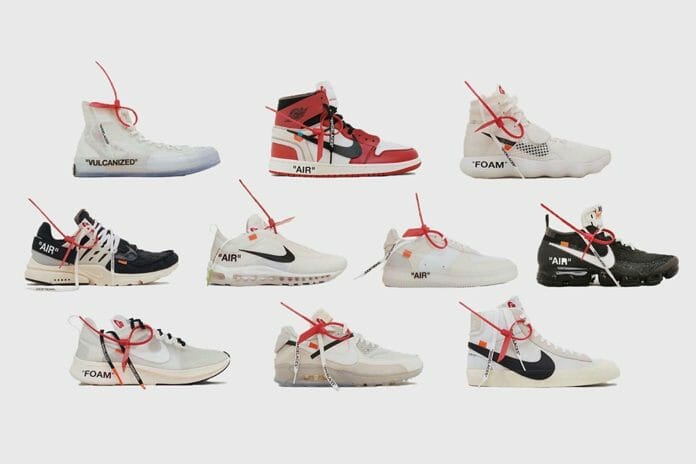
Quirky Influencer Campaigns by Nike
Have you seen Nike’s SpongeBob SquarePants Sneakers (released in August 2019)? I haven’t. Until today.
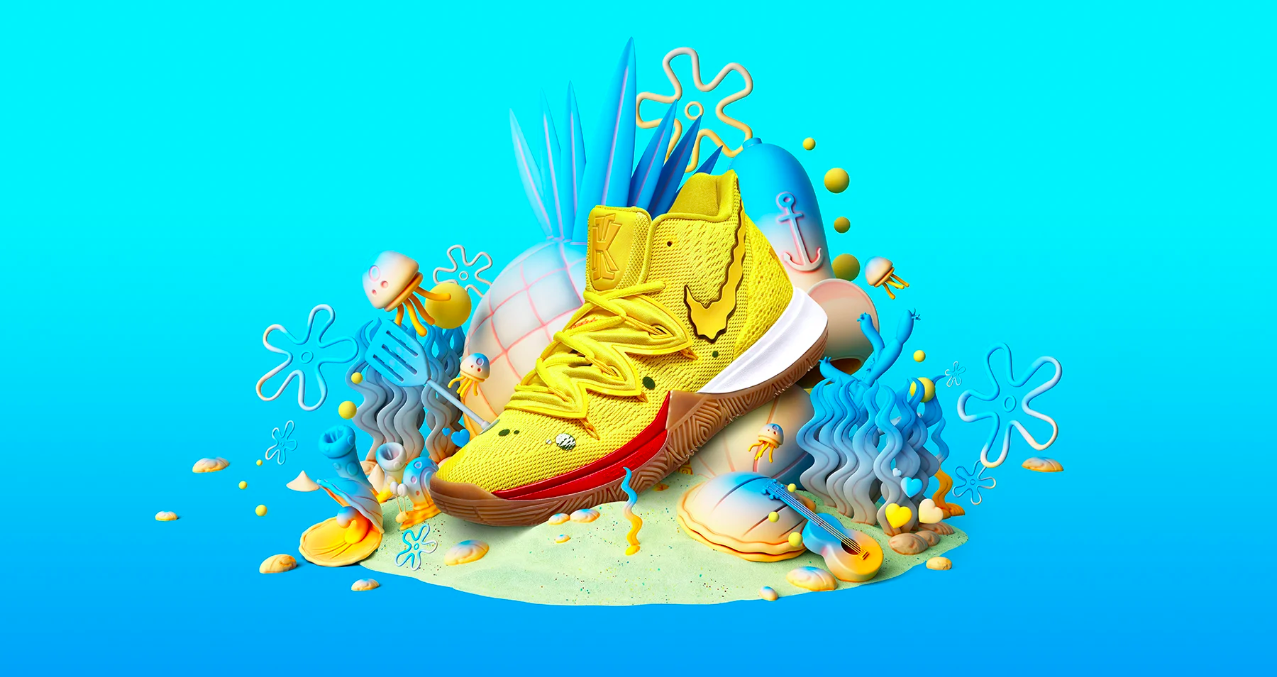
This is another example that Nike is no ordinary, corporate brand; they’re willing to show off their personality and quirky tastes. NBA star Kyrie Irving teamed up with Nike and Nickelodeon to produce a SpongeBob SquarePants-themed collection of sneakers and apparel. Why? Because he’s a big fan of the popular cartoon. From a marketing perspective, this is a genius way of broadening your target audience to kids (and adults!) who are not specifically sports fans.
Released on August 10, 2019, this shoe was already sold out by the beginning of September.
Dive Deeper: How to Grow Your Business With Influencer Marketing and Brand Partnerships
User-Friendly Interface of Nike’s Online Store
Okay, enough with Nike’s collaborations and partnerships for now. Let’s take a look at Nike’s website to see how their intuitive layout and user-friendly navigation creates a pleasurable experience.
The first thing that catches your eye are the videos, which are everywhere — on the homepage, category pages, social media accounts, etc. The most impressive part is that videos replace many of the product photos so that you can see the product in action (it’s hard to see, but hit the white play button in the center below):
Long-Form Video Content
In addition to the short video clips, Nike creates long-form video content. Their YouTube mini-series (7.4 IMDb user rating) called Margot Vs. Lily , who are night-and-day sisters, is a way to reach out to a younger female demographic – a core group of shoppers.
Rather than sell to these women, however, they’ve created a legitimate series with the help of Hollywood writer Jesse Andrews ( Me and Earl and the Dying Girl ) and director Tricia Brock ( Girls , The Walking Dead ) – and just happen to dress their actors in Nike gear.
Professional Lifestyle Photos
For static images, they use high-quality lifestyle photos on their website that are stunning. Products are shot from various angles to show details, durability and quality.
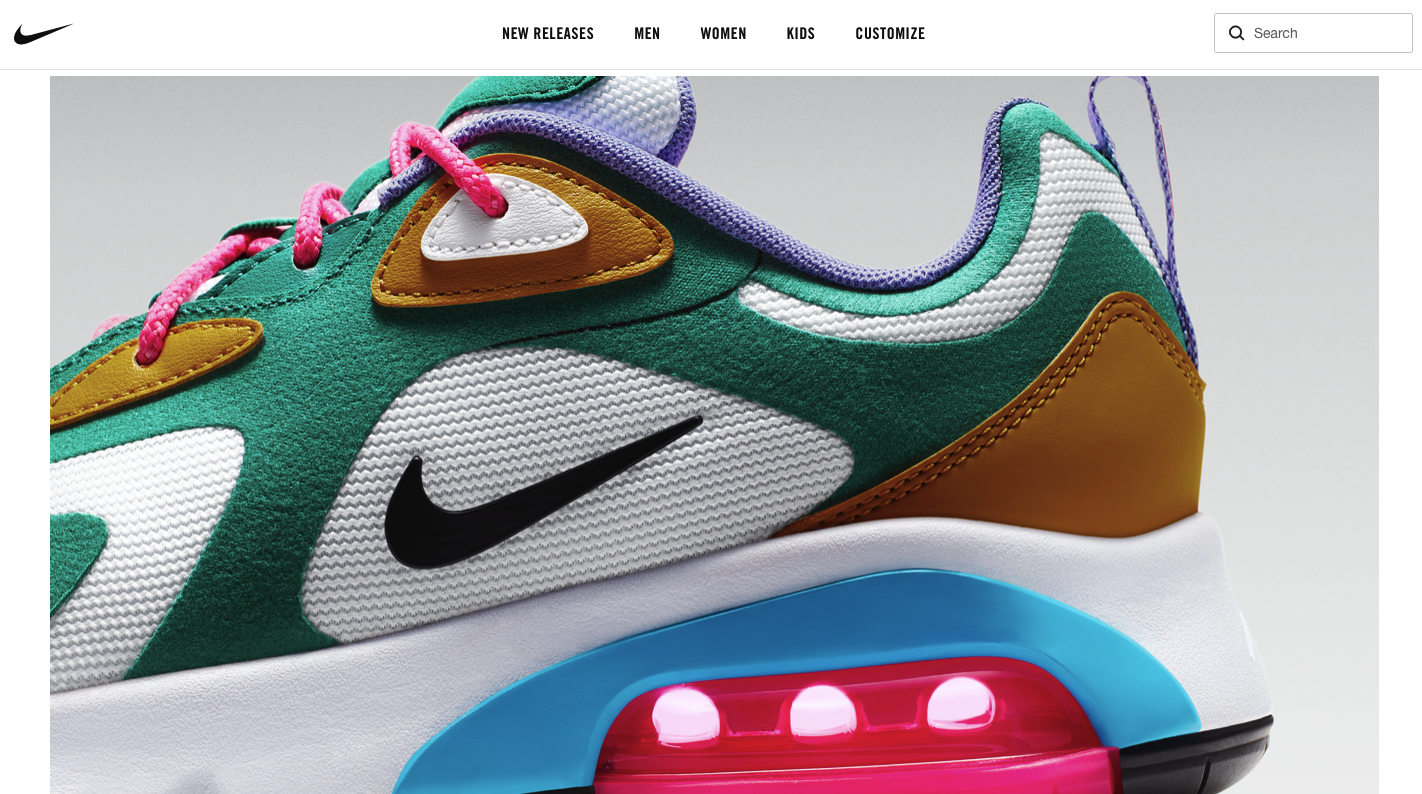
Dive Deeper: Overlooked SEO: Optimizing Images and Video For Search
Personalization
I’ve never even thought of getting a new pair of sneakers for myself until I saw Nike’s Psyched by You collection (a collaboration with International Girl Crew) that lets choose your tongue logo, swoosh, laces, base, and so on. These options for customization are likely to attract new consumers, like me, previously indifferent to sportswear.
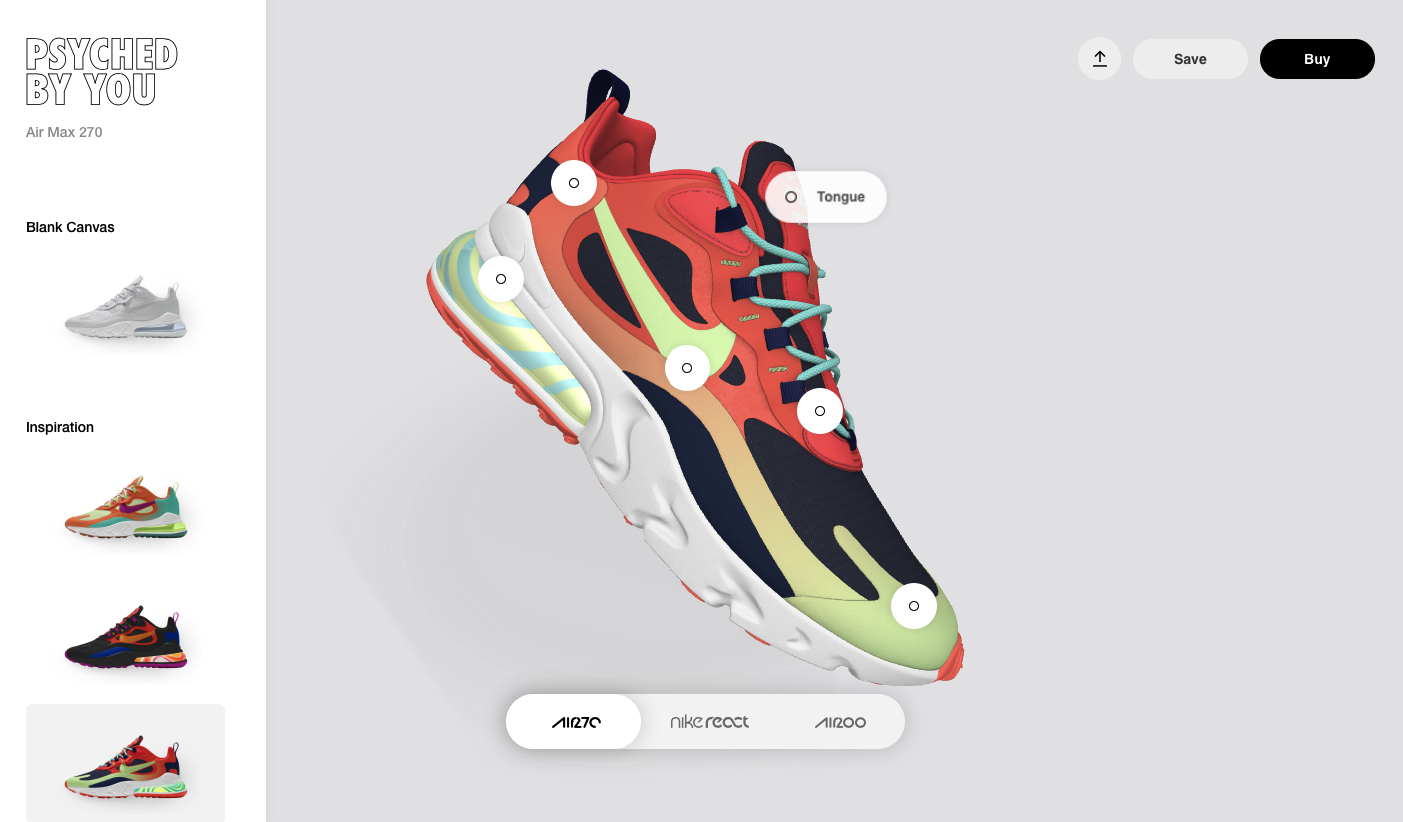
Dive Deeper: 3 Ways to Personalize the Customer Journey Experience
Easy Social Sharing
Nike’s website also offers various social sharing options that require minimal effort . Designed your sneakers? Awesome. Save it on the website, share the link with your friends, or just post it on Facebook.
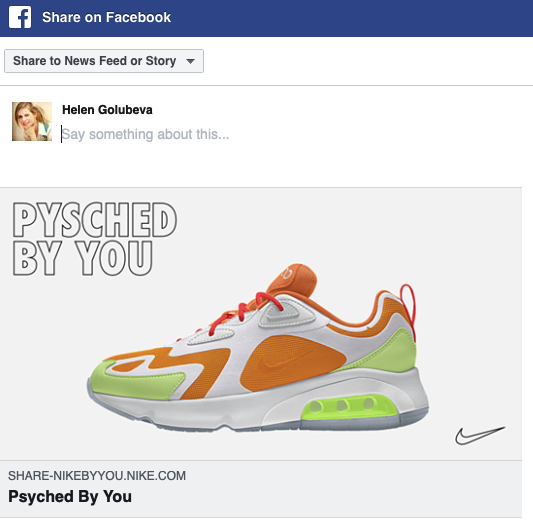
Nike leverages the power of social media to make the shopping experience more immersive. Mentions on Instagram, for instance, are displayed on the website to provide new consumers with more info about the product:
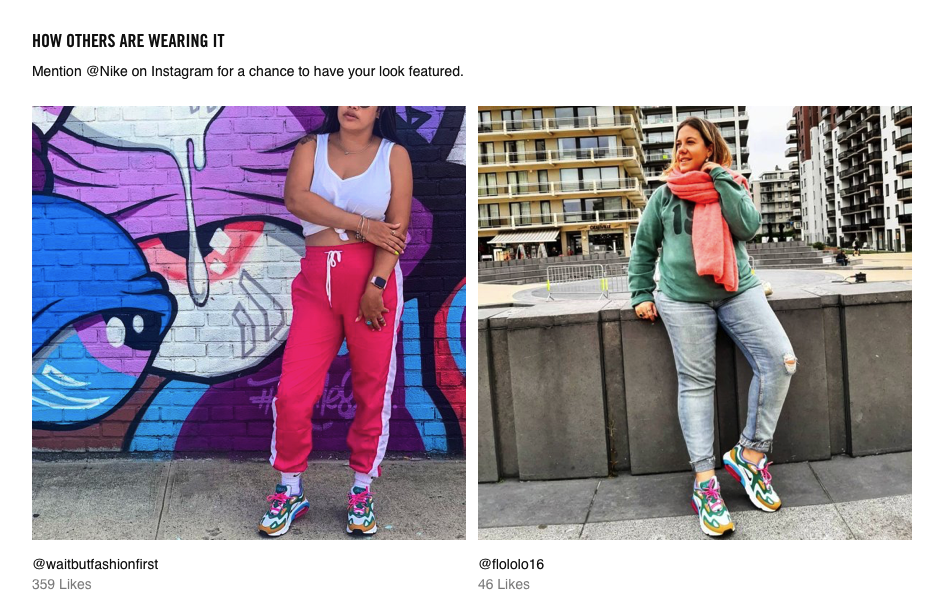
Dive Deeper: 13 Best Super Bowl Ads of all Time: What Your Business Can Learn from Them
Nike Puts Their Customers First
Nike stays laser-focused on their users, making sure that their customer journey is as smooth as it can possibly be. They get into the mind of their most impatient shoppers and navigate them towards checkout at the speed of light. And they create a pleasurable browsing experience for those who like to take it slow.
Here are the things that are great about Nike’s UX strategy:
Location and Language
Nike detects the location and language of each and every user who lands on their website, thus making the user experience more native and personalized. They even consider cultural preferences. For example, they show yoga-related clothing for users from Thailand:
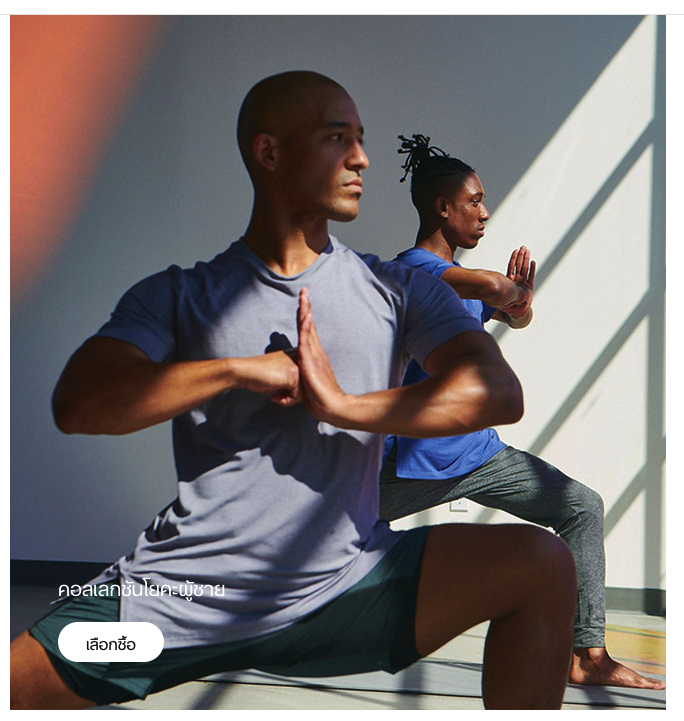
The Brazilian version of Nike’s site is full of bold and eye-catching color combinations, like this “Hyperflora” collection inspired by Mexican flowers and fantastic gardens:
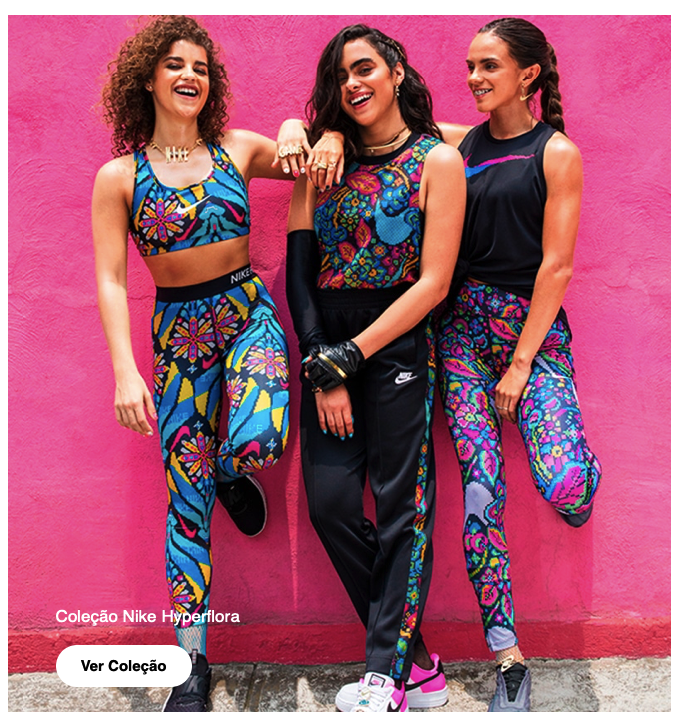
And to connect with women in India, Nike recorded “ Da Da Ding ,” a powerful song and a video clip by rapper Gizzle and producer Gener8ion featuring top female Indian athletes:
Read the full case study on how to inspire the athlete within every woman on MMA.
Dive Deeper: Geotargeting: How to Find the Right Customers for Your Brand
Audience Research
Nike invests a lot in audience research. They identify the channels where potential users spend most of their time and then go after them where they are, rather than force them to come to where Nike is. This is how they discovered the trend of Millennials watching web series on YouTube and launched their own 8-episode series ( Margot Vs. Lily ).
Masterfully using the storytelling technique , Nike knows how to capitalize on trends to get tremendous results.
Customer Service
Social media isn’t a monologue for Nike; it’s a conversation. The company maintains separate accounts for its subsidiary brands and uses them to chat with users and answer questions all over the world.
In March 2019, a potential consumer sent a picture of Patrick Reed, asking about the shoes he was wearing .
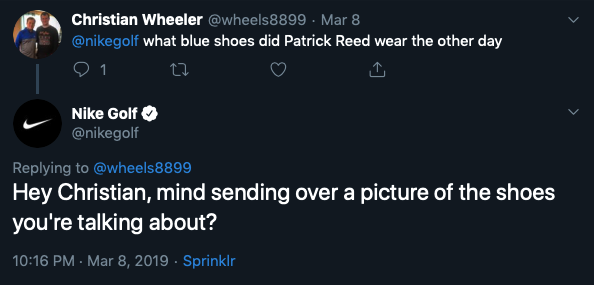
And you know what? Nike’s support team responded to him right away and provided a link to the shoes on their site to make it easy for the querent.
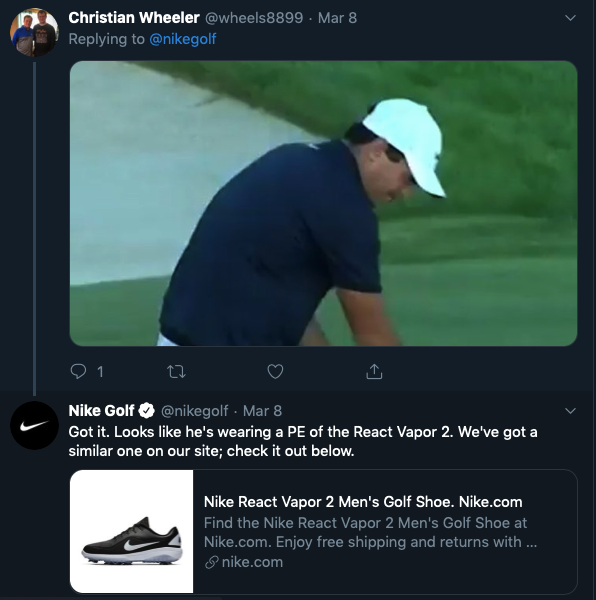
Inclusive, not Exclusive
Nike offers military and student discounts, so that their clothes more accessible for service members and young adults putting themselves through college.
Dive Deeper: 9 Ways to Deliver the Best Digital Experience to Your Customers
Nike Establishes an Emotional Connection with Its Customers
Have you ever felt the connection that Nike creates through their commercials? If not, take a look at this “Find Your Greatness” campaign, which features all sorts of people doing great things – not because they were born with a gift, but because they worked hard to overcome their fears, challenges or physical obstacles.
When you are watching commercials like these, you can relate to the regular people you see, feel what they feel and connect with them on an emotional level. With that in mind, I dare say that Nike is one of the most efficient emotional branding examples in today’s marketing world.
Check out episode #463 of Marketing School , in which Eric and Neil talk about the things that make a brand — including Nike — special.
Dive Deeper: 7 Examples of Storytelling Content You Can Use in Your Marketing Campaigns
Nike Masterfully Attracts New Customers with Perks and Bonuses
Browsing Nike’s products online, I was surprised to see that some of the items are not available for sale. In a world where every brand tries to sell their products or services in every way, format and media possible, here’s something that you cannot buy.
I’m talking about the Nike Plus Account that gives you immediate access to music, guided meditation, fitness classes – and exclusive products:
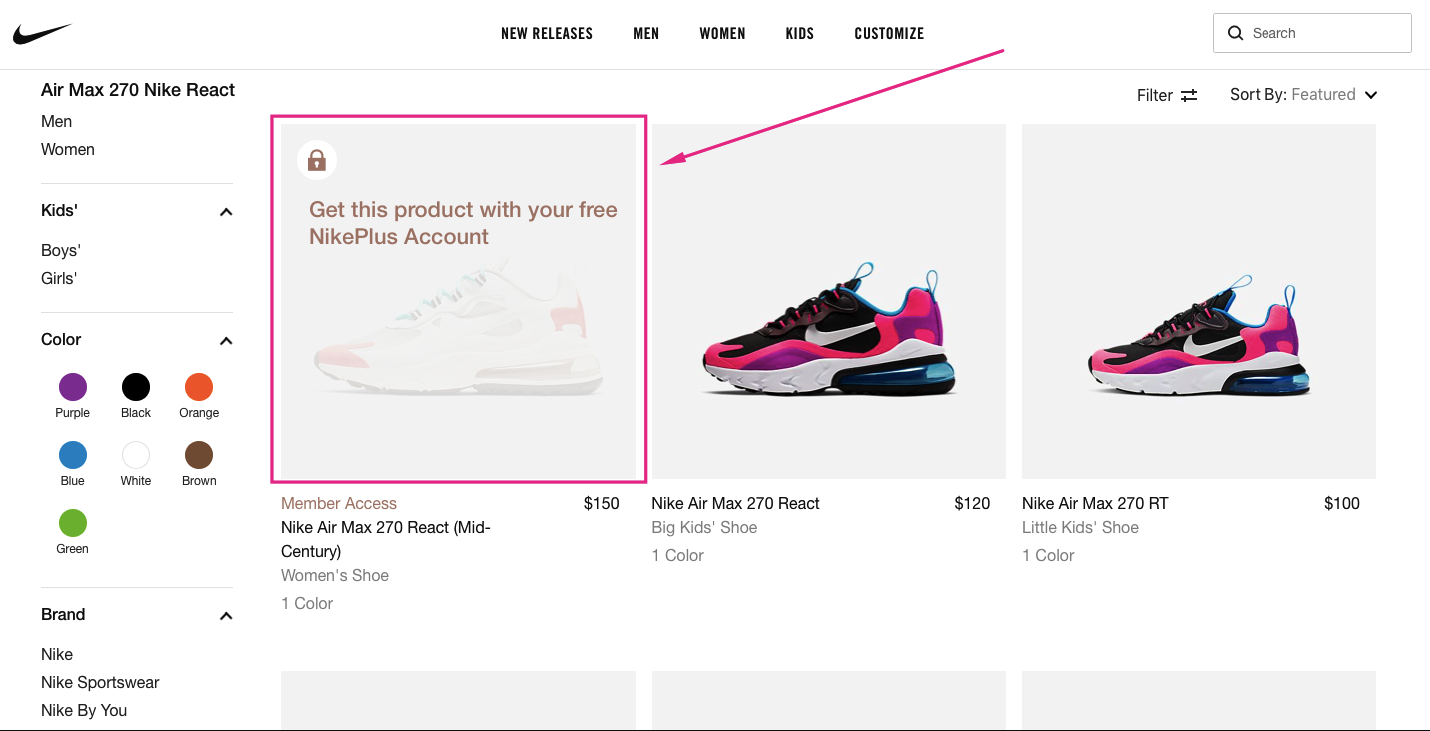
Ahh, that’s another marketing trick, you’ll say. Exactly. And it works. People always want what they can’t have, and if they have to sign up to be a member of an exclusive group, they’ll usually do it.
Creating an Unforgettable Retail Experience
Nike’s marketing strategy is not limited to the online world. They offer their customers a memorable in-store experience, too. Finding a physical Nike store near you is a breeze. You can do it both through Nike’s official website and their mobile app.
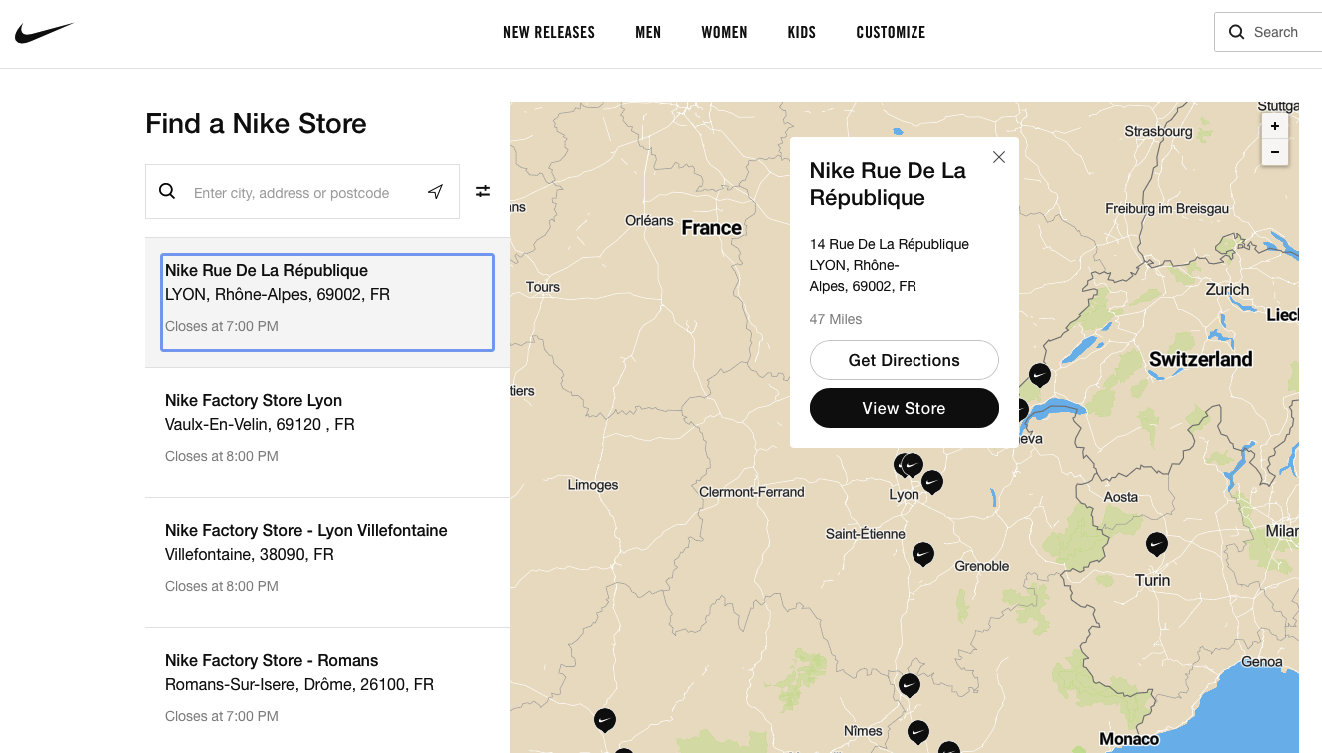
Need a hand choosing a sports outfit? Nike offers a “Shop with a Stylist” feature, the perfect way to make the most out of your store visit. Professional stylists are ready to give you personalized recommendations tailored to your unique needs. They know everything about sports and are often athletes themselves and, of course, know Nike’s products inside and out.
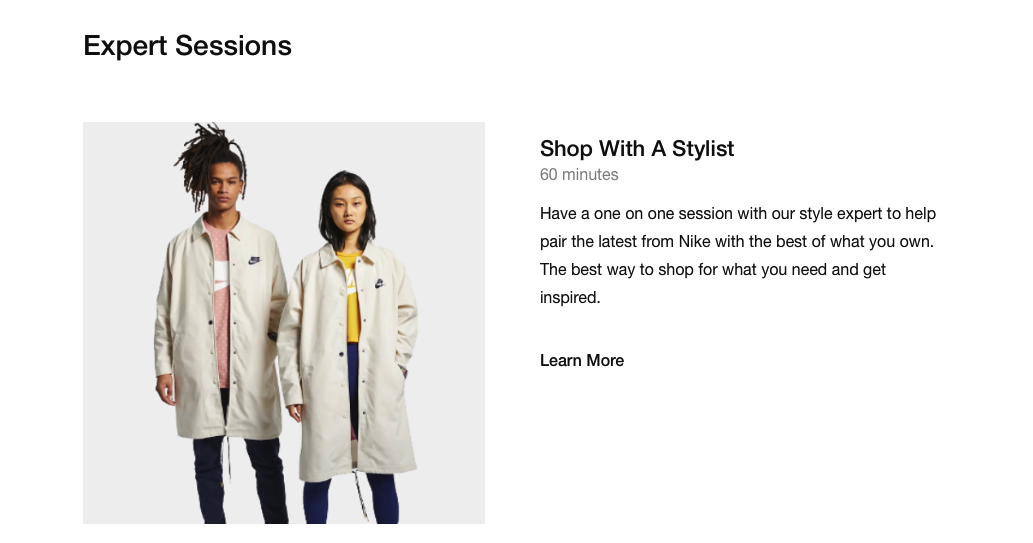
Nike is loyal to its affiliates. They offer an 11% commission rate , a 30-day cookie period, gifts to their partners, and a lot of other perks that you may like as an online merchant.
The sneaker giant has a fantastic retail app that allows you to:
- browse and reserve items that are available at the nearest Nike shop immediately
- scan barcodes to discover available sizes and colors
- request a try-on and directly connect to a Nike assistant to get your perfect size
- receive notifications when your products are ready for pick-up
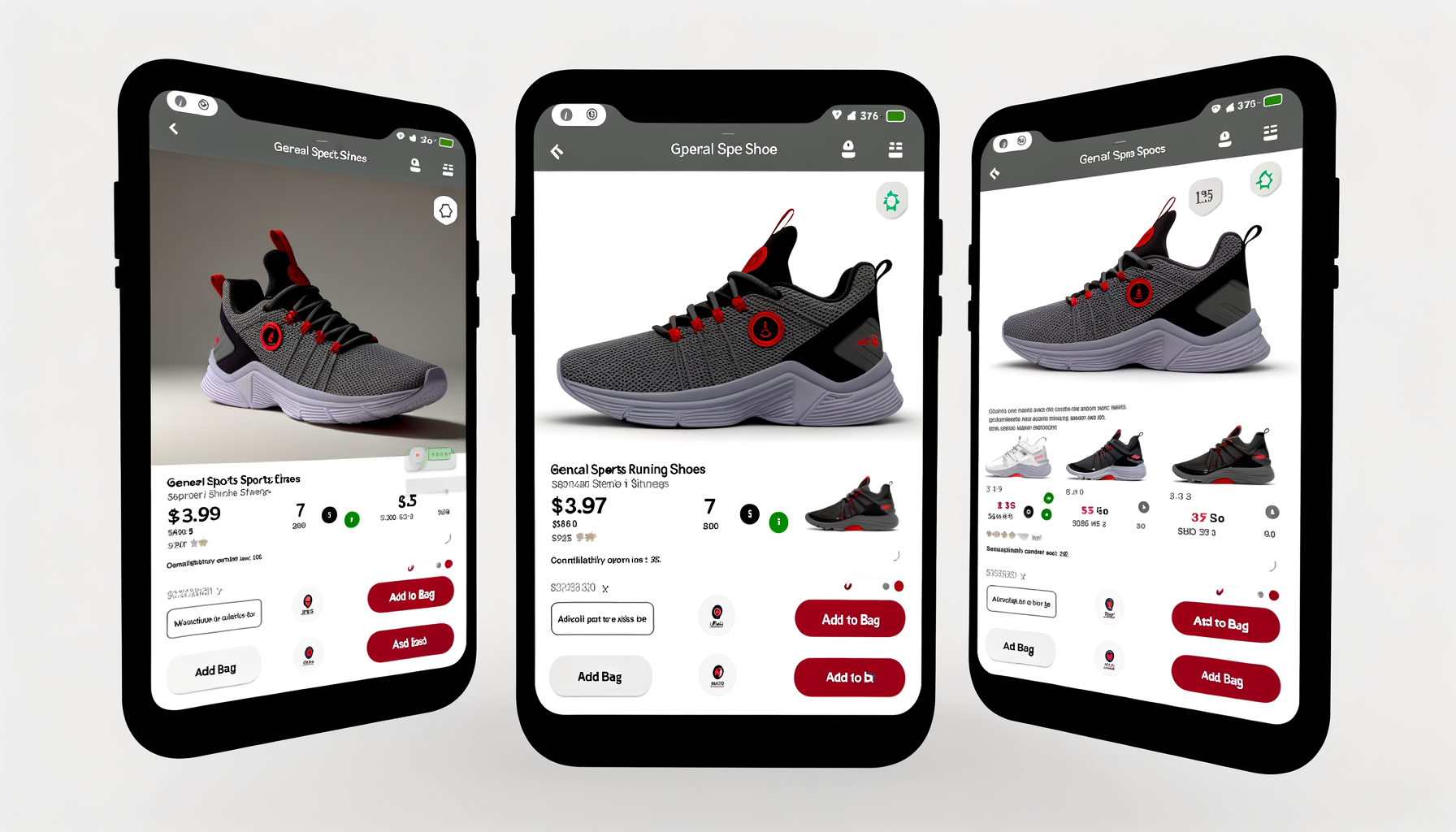
Not only that, but Nike uses Augmented Reality (AR) in its app to measure your feet with “perfect accuracy” and then suggest the perfect shoes for you. By using your smartphone camera, the app collects “13 data points, mapping your foot morphology for both feet within a matter of seconds.”
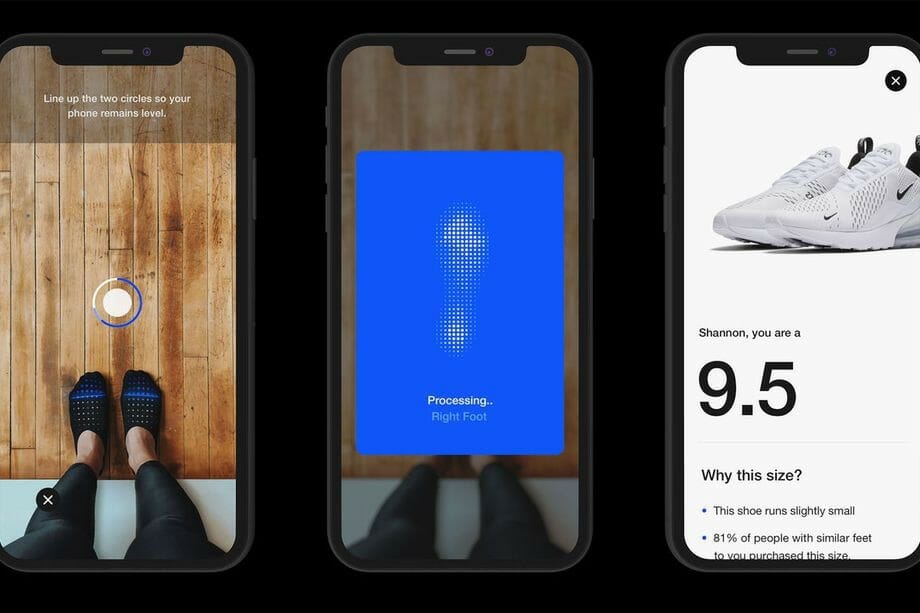
Learn More: What These Disney Marketing Strategies Can Teach Marketers
Over to You
Having grown from a small shoe manufacturer to the world’s most valuable apparel brand, Nike dominates the footwear market for good reason. They infuse authentic human emotions in their story, collaborate with celebrities and regular folks in order to connect with their audience, put their customers first, and make shopping online or in person personalized and easy.
That’s why Nike has over 1.15K stores worldwide, 76K employees, and earn $39 billion in yearly revenue. If you want to get to the top of your industry, follow this marketing template. Just do it. (You know I had to say that!)
Check out our video How Nike Does Marketing: A Bold Strategy to Rank #1 on Google in which Eric Siu shares his insight into Nike’s website and takes a look at digital marketing examples from SEO, Content Marketing, CRO and general marketing perspectives (and see some of the tools that Eric uses to evaluate a business model):

Get Your Free 2024 Growth Guide with Our Newsletter, Leveling Up
Subscribe to Leveling Up and receive a free 2024 Growth Guide in your inbox. These emails are brimming with marketing strategies that are working right now and must-have resources. Join our community of 15,000+ subscribers, including professionals from Amazon, Google, and Samsung.
IN Marketing Strategy Mixed Media Modeling (MMM): Understand Your Marketing Efficiency in 2024 BY Sam Pak Learn how mixed media modeling (MMM) can give you a fuller perspective on how your media is impacting sales. Read Article
IN Marketing Strategy 13 Dentistry Marketing Strategies to Put Your Practice On The Map BY Eric Siu Explore innovative dentistry marketing strategies that transform dental practices with digital trends, unique patient experiences, and community engagement. Read Article
IN Marketing Strategy How Sora Changes Marketing and Business Dynamics BY Eric Siu Explore how Sora changes marketing, impacting business strategies and content creation. Dive into the analysis of AI's role in the industry's future. Read Article
Leverage Influencer Strategies for Growth
Receive tailored strategies crafted by our team of experts.
Get Free Instant Access
8 Effective Online Marketing Tactics
That Have Generated 1,545%+ ROI for our Customers (and You Can Easily Use)
We hate SPAM and promise to keep your email address safe.
Fill out the form below to receive personalized strategies from our expert team.

“We can count on them to bring new ideas to the table consistently”
Jacqueline Foster , Demand Generation Marketing, Lever.co
Get The Latest Customer Acquisition Strategies
Get the latest customer acquisition strategies from the best companies
Which would you like to learn more about? (Check all that apply)

Are you looking for slow growth or fast growth?

“Single Grain enables us to increase our impact without increasing our headcount”
Kim Cooper , Director of Marketing, Amazon Alexa
Do you have the infrastructure to take on 2x, 5x, 10x scale?

“They act like an extension of our team, proactively fixing issues as they arise”
Samantha Goldman , Sr. Director of Marketing, CastLightHealth
How much are you spending on marketing per month right now?

“Their expertise has helped Nextiva grow its brand and overall business”
Yaniv Masjedi , CMO, Nextiva
Subscribe to AI in Action – your guide to AI transformation >

- September 23, 2023
- AI Case Studies
Case Study: How Nike is Leveraging AI Across its Operations

Nike, a global leader in sportswear and athletic footwear, has long been at the forefront of innovation and customer engagement. In recent years, the company has made substantial investments in Artificial Intelligence (AI) and other emerging technologies to transform not just its products but also its customer experience, supply chain, and IT operations. This drive towards tech-enabled solutions has been especially significant in the face of the global pandemic, which pushed consumers and businesses more towards digital platforms. Nike has collaborated with partners like Cognizant to modernize its IT infrastructure, offering both onsite and remote support across a wide range of hardware and applications. With a focus on sustainability, customer engagement, and operational efficiency, Nike’s AI journey represents a compelling case study in corporate innovation.
Key Takeaways
- Nike employs AI to enhance customer experience through hyper-accurate shoe fitting, personalized offers, and virtual assistants.
- Advanced analytics and AI-driven strategies have been adopted in Nike’s supply chain to improve speed, accuracy, and sustainability.
- Collaboration with IT major Cognizant to bring in hyperautomation and AI into Nike’s technology operations, aiming for improved service productivity and cost savings.
- Challenges include data privacy concerns, achieving 24/7 customer service accessibility, and ensuring the sustainable use of technology.
Deep Dive: How Nike is Leveraging AI Across its Operations
Nike’s approach to AI is holistic, covering a wide array of applications from customer experience to supply chain management. In customer engagement, Nike uses AI-powered apps that offer hyper-accurate shoe fitting and personalized recommendations. The company also employs AI for deep customer analytics, aided by its acquisition of Zodiac, a data analytics firm. On the supply chain side, Nike has integrated AI and machine learning to predict product demand and to forward-position popular products, reducing lead times and improving service quality.
Implementation
Nike has been pragmatic in its AI implementation. Customer-facing AI solutions include an app that employs augmented reality and a 13-point measuring system for shoe fitting. In its supply chain, the company has opened multiple regional distribution centers fueled by AI algorithms to meet localized demand more effectively. Furthermore, through a five-year agreement with Cognizant, Nike is enhancing its global technology operations. This includes multilingual IT customer service, deskside and dispatch depot, as well as application and infrastructure support.
Nike’s AI initiatives have been quite successful. The AI-powered apps have not only improved customer relationships but have also provided valuable data for product design and inventory management. Nike has also tripled its digital order capacity in specific markets thanks to AI-enhanced supply chain operations. The collaboration with Cognizant is expected to bring new self-service capabilities, improve service productivity, and offer significant cost savings.
Challenges and Barriers
While Nike has seen significant gains from its AI investments, challenges do exist. Data privacy is a significant concern given the vast amount of customer data collected through various apps. The ambition for 24/7 customer service through AI tools like chatbots also poses its own set of challenges, including maintaining the quality of service. Additionally, the drive for sustainability requires Nike to continuously scrutinize its tech-enabled operations for environmental impact.
Future Outlook
As consumer behavior and technology continue to evolve, Nike is poised to further its AI capabilities. Plans likely include the expansion of AI in customer service applications, increased automation in the supply chain, and deeper collaborations with tech partners like Cognizant. Given its past performance and strategic focus, Nike’s AI initiatives will undoubtedly continue to play a significant role in shaping both the company and the broader retail industry.
Nike’s journey in AI represents a well-rounded strategy that touches multiple facets of the business, from customer experience to supply chain and IT operations. By focusing on delivering personalized experiences, optimizing operations, and tackling challenges head-on, Nike serves as a textbook example of how AI can be effectively implemented in a large, global enterprise. Its efforts in AI have not only improved its bottom line but have also set the stage for future innovations that will likely continue to redefine the retail landscape.
To get the latest AI case studies straight to your inbox, subscribe to AI in Action by AIX — your weekly newsletter dedicated to the exploration of AI implementation and adoption in business.
Elevate your understanding of AI applications. Browse case studies searchable by company, industry, use case, and technology.
Sources: Cognizant To Drive Nike’s Efforts In Hyper-Automation, AI In 5-Year Deal Nike and Cognizant expand their relationship into technology Nike building its global ‘digital first’ supply chain’ with 1,000 picking robots How Nike Leverages AI for an Exceptional Customer Experience
Let’s talk
Whether you’re looking for expert guidance on AI transformation or want to share your AI knowledge with others, our network is the place for you. Let’s work together to build a brighter future powered by AI.
Related Posts

Case Study: The Role of AI at CB Insights
- August 25, 2024

Case Study: The Future of Venture Capital at Earlybird VC
- August 24, 2024

Case Study: How Claudia is Guiding Investors at Axevil Capital
- August 23, 2024
Nike Marketing Strategy 2024 - 7 Effective Findings from Case Studies

- 20 Comments
- Published on Jun 21 2024

Table of Contents
Nike marketing strategy: top effective findings from case studies, history of nike, goals and objectives - nike marketing strategy, nike’s target audience, nike marketing strategy: challenges, solutions, and its approaches, how nike’s marketing strategy evolved, how to apply the nike’s marketing strategy to your brand, growth and market reach, what to take.
Nike has taken an image of an athleisure company and an American multinational corporation, but, the brand has taken way the world with inspiration, emotion, diversity, and unity with its simple marketing campaigns.
The core purpose of Nike marketing strategy is to keep moving the world forward. Over the years, it has launched and introduced various stylish and sustainable services from remembering the Swoosh, and the tagline ” Just Do It” which does not only come into our mind.
Enlisting the action of Nike's marketing strategies is remarkable. What makes it so special to get the products?
There are multiple reasons why people buy Nike products in this case study explained, but, one absolutely convincing means is that it is more than a brand that builds communities, planet protection, and makes sports accessible beyond diverse horizons. We have also discussed the top Nike Marketing Strategies that you can learn in 2024.
Purpose of the Article
The main aim of this article by Sprintzeal caters to information as social proof from various case studies about a process, product, or service that can resolve marketing issues.
Known as one of the largest athletic apparel companies, Nike (Nike, Inc.) is an American multinational association that deals with the design, development, manufacture, and global marketing and sales of footwear, accessories, apparel, equipment, and services. Began with a mission to, “bring inspiration and innovation to every athlete” in the world It is based in Beaverton, Oregon, NIKE, Inc. includes the Nike, Converse, and Jordan brands, and many more.
It was founded by Bill Bowerman and his former student Phil Knight in 1964.

Nike plans to build a 3.2 million square foot expansion to its World Headquarters in Beaverton.
The Nike brand strategy focuses on bringing the culture of the invention to today’s athletes while solving issues for the upcoming generation.
Nike has acquired and sold several footwear and apparel companies over the years. It has also acquired Starter, Zodiac, Celect, and Datalogue and purchased RTFKT Studios.
It was founded in 1964 by Bill Bowerman, a track-and-field coach at the University of Oregon, and his former student Phil Knight as Blue Ribbon Sports. The brand was rebranded in the 60s, their company was relaunched as Nike in 1971.
In 1972, Blue Ribbon sports which later became Nike unveils "Moon Shoes
In 1974, the Waffle Trainer was patented, featuring Bill's famous Waffle outsole.
In 1982, introduced the Air Force 1 basketball shoe.
In 1994, Nike signs LeBron James
In 2000, launched Nike Shox in the market.
In 2008, introduced the Flyware shoe and signs Derek Jeter
In 2018, introduced React Element 87. Nike launched a new "Just do it" ad campaign featuring Colin Kaepernick.
In 2020, Nike Air-max 97G "Peace and love" was introduced. It also reveals uniforms for the 2020 Tokyo Olympics.

The main priorities and objectives of Nike marketing strategy,
- It includes promoting diversity, equity, and inclusion.
- Innovations that create sustainable materials and approaches to tackle environmental impact.
- Towards advancing a transparent and responsible supply chain.
- To build community by investing in organizations that pay efforts on economic empowerment, education, and equality.
- Uplifts unity with the current generation through sport and encourages an active lifestyle to reach their potential future.
To truly understand the effectiveness of Nike's marketing strategy, it's crucial to dissect the various segments within their vast target audience. Nike's ability to connect with different consumer groups is a central theme in this Nike marketing strategy case study. Let's delve deeper into these segments:
Athletes, Professionals, and Enthusiasts: Nike casts a wide net, catering to athletes at all levels, from elite professionals to passionate enthusiasts. Their product range is meticulously designed to enhance athletic performance, making Nike the preferred choice for athletes worldwide.
Running Enthusiasts: Nike's dominance in the running domain is unparalleled. They offer an extensive selection of running shoes, apparel, and accessories tailored to the specific needs of runners, whether they're seasoned marathoners or occasional joggers.
Sports Enthusiasts: Beyond athletes, Nike appeals to anyone with a fervent passion for sports. Their marketing efforts invite individuals to adopt the mindset of an athlete, whether they actively engage in sports or simply lead an active lifestyle.
Women in Sports: Recognizing the growing influence of women in sports, Nike has dedicated a significant portion of their marketing efforts to empower female athletes and sports enthusiasts.
Young Athletes: Nike understands the importance of cultivating brand loyalty from a young age. Their marketing strategies are crafted to inspire and engage young athletes, nurturing a lifelong connection to the brand.
Sustainability Advocates: In recent years, Nike has expanded its reach to consumers who prioritize sustainability and ethical practices. Their marketing seamlessly integrates these values, resonating with the environmentally conscious audience.
This diverse and inclusive approach to their target audience has been a pivotal factor in the success of Nike's marketing strategy. It showcases their ability to resonate with a wide range of consumers, from professional athletes to environmentally conscious individuals.
Striving to create more eco-friendly materials as possible, bioplastic for their sneakers is used as a replacement for plastic, leather, and other materials.
Well known for the fact that Nike promotes its products through sponsorship agreements with influencing athletes, professional teams, and athletic teams.
- High level competition of Nike with Adidas and Reebok and other companies with the closely similar product line and common target markets.
- Limited exports of Nike products due to legal restrictions can be one reason for fewer sales or revenues.
- The economic and political situation of those countries manufacturing Nike products is also one main challenge.
- Being a global brand, controversies are sensitive to the company image.
Hence, these is some of the reasons why strategies are relevant for Nike.
The questions still arise, why do people go after Nike products even if several brands apply the same approach? Does Nike market segmentation do it differently?
With being able to pull effective Nike marketing plan guidelines over past years; the other part also had faced consequences and drove up on solutions-making with,
1) Advertising
One of the key parts of the Nike advertising strategy is advertising through television ads and other social media forms with affiliate marketing.
In 1982, Nike aired its first three national television ads during the broadcast of the New York Marathon.
2) New Media Marketing
Having to understand the importance of having different mediums along with display advertising, content marketing, and social media promotions, boosts Nike global marketing strategy in the right direction.
Nike is risk-taker, with the way to early application of internet marketing, email management technologies, narrowcast communication technologies, and broadcast to build multimedia marketing campaigns.
3) Emotional Branding
How undeniable that Nike always puts powerful emotions through the brand! The advertisement seldomly briefs on its products and services.
A few of the best ads and commercials from Nike quotes for motivation, inspiration, and greatness can be:
“We gave up giving up”,
“All you have to do is pick up your feet.”
“My better is better than your better.”
“Don’t believe you have to be like anybody to be somebody.”
The building of the right emotions by Nike effortlessly comes through curated content and narrative that again narrates a story; a tale of inspiration applicable to anyone to combat their challenges and meet their victory.
Instead, Nike emotional branding has been impactive followed as an effective strategy in the world of marketing at present. It inturns invokes emotions related to success, morale, victory, and self-improvement which makes it a powerful product.
4) Nike Target Market Segmentation
One thing marketers should learn from nike segmentation targeting and positioning
is understanding their customer.
And, Nike focuses very well on their main target markets for their product and services i.e., athletes, runners, and sports enthusiasts.
In the running years, it enlarges strategies to lead precise market segments for runners, women, and young athletes.
An observation is taken into action to create that meets the custom interests as per customer requirements.
5) Convey a Story
To have been accompanied by a global audience, another marketing strategy applies by conveying the story in simple and effective points rather than using descriptive or jargon with their brand voice.
In this way, they connect and try to encourage the masses to chase their dreams and “Just do it”.

An instance as shown in the above image; another excellent technique is their tagline which builds an emotional marketing story that relates to anyone to catch their dream and build customer loyalty,
6) Newsworthiness
This brand strategy uses newsworthiness to impact and appeal to a story. In most cases, it uses recent events or happenings about what people need or want to know.
It is also tricky to decide what stories to cover, but Nike evaluates and continues with newsworthy stories before the release to avoid controversies or false information.
This pattern could be applied based on events that impact your readers all over the world
7) Invest in Customer Loyalty
In Nike, it associates with diverse masses apart from the target audience. Does it have good customer loyalty? Yes.
With less loyal customers, the challenge to come up with anticipatory decisions and effectively plan your finances can be scary.
One of the reasons the brand is irresistible globally till current which is less surprising is sole because of customer loyalty. The precise, well-executed product and service not only attract new customers but retain customers with good profit margins.

- Nike is releasing “No Finish Line,” a new book that celebrates and figures Nike’s 50 years of game-changing design and innovation in the favor of athletes and sports. It lay down a design vision for the next 50 years.

- It applies measures to create a better future by investing in active and inclusive communities. Nike Community Impact Fund (NCIF), an employee-led and neighborhood-focused approach
in aid of local community organizations globally for a positive, effective, and making a play for all the kids.
- Nike made about 35% digital and aims to achieve 50% by 2025.
One of the best ephemeral approaches is that a part of Nike’s success goes to influencing and inspirational athletes such as Michael Jordan, Mia Hamm, Roger Federer, Tiger Woods, Kobe Bryant, Lebron James, and many others.
To truly appreciate the efficacy of Nike's marketing strategy, it's essential to trace the evolutionary path it has taken over the years. This retrospective analysis of Nike's marketing strategy is integral to our Nike marketing strategy case study. Here is a comprehensive exploration of the evolution of Nike's marketing approach:
The Early Years: Nike's origins can be traced back to its predecessor, Blue Ribbon Sports, which primarily served as a distributor of Japanese running shoes. During this nascent phase, Nike's strategy was firmly rooted in performance and innovation.
The Birth of Nike: In 1971, Nike emerged as a distinct entity, drawing inspiration from the Greek goddess of victory. This marked the inception of Nike's emphasis on empowerment and achievement, an approach that would become central to their branding.
Celebrities Take Center Stage: The 1980s heralded a new era for Nike, marked by the strategic use of celebrity endorsements, most notably with basketball icon Michael Jordan. These high-profile endorsements solidified a deep emotional connection between Nike and consumers.
The "Just Do It" Era: In 1988, Nike introduced its iconic "Just Do It" slogan, encapsulating the ethos of personal determination and resilience. Swiftly, it became synonymous with the brand's identity and mission.
Digital Transformation: Nike was an early adopter of digital marketing, recognizing the potential of the internet and social media. They harnessed these platforms to engage consumers through multimedia campaigns and create a digital presence that mirrored their innovative spirit.
Emotional Branding: Nike's pivot towards emotional branding represented a pivotal moment in their marketing evolution. Rather than simply showcasing products, they focused on evoking powerful emotions, such as success, motivation, and self-improvement. This shift solidified Nike as a potent and influential brand.
Sustainability and Inclusivity: In recent years, Nike has demonstrated a commitment to sustainability and inclusivity, both in their products and marketing. They aim to create eco-friendly products and promote social responsibility, aligning with the evolving values of today's consumers.
This journey of evolution highlights Nike's remarkable adaptability and capacity to align their strategy with changing consumer landscapes. From their roots in performance and innovation to their current focus on emotional branding, sustainability, and inclusivity, Nike's marketing strategy has continued to resonate with a diverse and ever-changing audience.
To harness the power of Nike's potent marketing strategy for your own brand, it's essential to follow a well-defined blueprint. This section of our Nike marketing strategy case study provides a step-by-step guide on how to apply Nike's principles to your brand effectively:
Know Your Audience Inside Out: Much like Nike, start by conducting thorough market research to understand your target audience's specific needs, preferences, and aspirations. Tailor your products and marketing strategies accordingly.
Forge an Emotional Connection: Take a page from Nike's playbook and aim to create profound emotional connections with your audience. Share compelling stories that resonate with your brand's mission and values, inspiring and motivating your customers.
Embrace the Digital Realm: Leverage the expansive digital landscape, including social media, content marketing, and multimedia campaigns, to amplify your brand's reach. Follow Nike's lead in utilizing these platforms effectively to engage and captivate your audience.
Champion Sustainability and Social Responsibility: If your brand aligns with sustainability and social causes, make them integral to your strategy. Showcase your commitment to positive change through sustainable practices and support for relevant social issues.
Consistency is Key: Maintain a consistent brand image and message across all marketing channels. This consistency not only reinforces your brand identity but also leaves a lasting impression on your audience.
Prioritize Innovation: Continuous innovation should be at the heart of your strategy, much like Nike's dedication to pushing the boundaries. Innovate your products and marketing strategies to stay relevant and capture the full attention of your audience.
Leverage Influencers and Celebrities: Collaborate with influencers or celebrities whose values align seamlessly with your brand's mission. This partnership can help expand your reach and enhance your brand's credibility, similar to Nike's successful partnerships with iconic athletes.
By following these steps, you can effectively incorporate the power of Nike's marketing strategy into your own brand. Building a successful brand, as exemplified in this Nike marketing strategy case study, requires a strategic approach, unwavering dedication, and a profound understanding of your audience's aspirations and needs.
Don't Wait, Just Do It
In the ever-changing field of marketing, the key to success is action. Much like Nike urges you to take action; we encourage you to propel your digital marketing career forward by enrolling in Sprintzeal's Digital Marketing Course. Don’t let your hesitation cost you your opportunities.
Equip yourself with the skills, knowledge, and confidence excel in the digital marketing domain. We curate and design our courseware to ensure you're well-prepared for the dynamic world of digital marketing. So, why delay? Enroll now , and allow us to help you make your career in digital marketing.
As per Wikipedia , During the Q1 of 2020, the company's online sales have grown by 36%. While the net income in mil. is $6,046 and revenue is $46,710 in 2022.
As per the Forbes report, Nike's Financial Summary for 2022, the revenue is $46.9 billion with assets of $38.6 billion and profits of $6.1 billion.
The following image gives a glance at the percentage growth with the approaches.

Image Source: Nike
Final Results
During the article study, we also found that problems may occur subsequently with changes made to the distribution, marketing, and management strategies of Nike.
Companies can refer to Nike's marketing strategy to influence the four Ps i.e, price, product, promotion, and place. New features may expand the changes to higher growth of the product and might develop a new market.
Source 1: Nike-A Case Study Just Do It
Source 2: Nike Marketing Case Study
Source 3: An Investment Analysis Case Study: Nike - NYU Stern
Research Details
This article emphasizes curated study from three case studies apart from Nike’s official website.
Therefore, all the effective strategies are presented for information and education means for readers in response to the current marketing issues along with the given references in this article.

Winning the market is one technique that Nike has been doing so well since its implementation till date. What’s even interesting is having to market its products under its various brands and subsidiaries.
The subsidiaries like Nike+, Nike Golf, Nike Blazers, Nike Pro, Air Jordan, Air Max, and other brands like Hurley Int., Jordan, and Converse.
In the field of such marketing, digital marketing plays a dominant role. To pursue a career in digital marketing training, choosing from a globally recognized ATO (An accredited training organization) from Sprintzeal accelerates your career of interest.
To explore more courses, consider visiting Sprintzeal’s all courses and earn a certification to level up your career.
For details or queries in your field, Click Here or chat with our experts , and our course experts will get to you.
What is the marketing strategy of Nike?
Nike's marketing strategy focuses on using compelling storytelling and imagery to make an emotional connection with its target audience. They leverage iconic slogans like "Just Do It," collaborate with high-profile athletes, and utilize social media to engage directly with consumers. By focusing on innovation, quality, and sustainability, Nike maintains a strong brand presence that resonates globally.
What is Nike's targeting strategy?
Nike has a diverse range of target audiences, ranging from professional athletes to recreational exercisers. They segment their market by demographics, psychographics, and behavioral data, tailoring products and marketing campaigns to specific groups. Nike also emphasizes inclusivity and diversity, ensuring their brand appeals to a broad and varied audience.
What are the pillars of Nike marketing?
Nike's marketing is built on three main pillars:
- Innovation: Continuously pushing the boundaries with new technologies and products.
- Athlete Endorsements : Partnering with top athletes to enhance brand credibility and reach.
- Emotional Branding : Tells touching tales that appeal to customers' emotions and help them relate to you personally.
What is Nike's personal selling strategy?
Nike's personal selling strategy focuses on creating personalized and immersive retail experiences. Their stores are designed to showcase the brand's lifestyle and innovation, with knowledgeable staff who offer expert advice and personalized recommendations. Nike also utilizes digital tools to enhance the shopping experience, such as the Nike app, which provides customized product suggestions and exclusive content.

Subscribe to our Newsletters
Explore program.

Apply for Free Consultation

Nchumbeni Yanthan
Nchumbeni is a content writer who creates easy-to-read educational blogs, articles, varying client request, and social media content helping millions of learners meet their career goals.
Popular Programs

Digital Marketing Masters Program
Live virtual training.
- 5 (859 + Ratings)
- 60k + Learners
Trending Now
Top Google Chrome Extensions for Online Marketers in 2024
11 Most Common Misconceptions About SEO in 2024
Guide to Banner Advertising for Google Ad Sense and Other Ad Networks
Brand Managers Guide 2024
Digital Marketing – Benefits, Types, Certifications and Jobs
Red Bull's Extreme Marketing Strategies: Gives You Wings
Latest Digital Marketing Manager Interview Questions and Answers 2024
Top SEO Topics and Concepts – Role of SEO, Google, and AI with SEO
Digital Marketer Interview Questions and Answers 2024
Fundamentals of Digital Marketing 2024
Best Digital Marketing Books for 2024
On Page SEO Guide
Digital Marketing Plan - How to Create and Execute it
Brand Marketing Strategy Guide
YouTube Marketing Guide 2024
Career in Digital Marketing - A Complete Guide
SEO Optimization Tips for 2024
Career in Advertising - The Beginner's Guide
Affiliate Marketing - A Comprehensive Guide for Beginners
CPA Marketing Guide 2024
Search Engine Marketing - A Guide for Beginners
Top Digital Marketing Tools 2024
The future of Digital Marketing
Conversational Marketing - The Ultimate Guide 2024
Coca Cola Marketing Strategy - A Case Study
Tesla Marketing Strategy: Key Lessons to Learn
Digital Marketing Challenges & Solutions in 2024
SEO in Digital Marketing - How Does It Work?
How to Create a Social Media Marketing Strategy
Email Marketing for Beginners - Tips, Tools and Advantages
Colors for Marketing: Psychology of Colors for Your Brand
LinkedIn B2B Marketing Guide
What is PERT? How to use PERT in Project Management?
A Beginners guide to LinkedIn Marketing in 2024
Traditional Marketing vs Digital Marketing: How to Choose?
Types of Infographics - When and How to Use
Digital Economy - What is it and why is it important
What is Digital Leadership? A Brief Guide
Digital Marketing Tips for 2024
Online branding - Examples & Strategies
Amazon Marketing Strategy – A Brief Guide
Netflix marketing strategy- An overview on marketing tactics of Netflix
IKEA Marketing Strategy - An Inspiring Finding from the Case Studies
Discover Starbucks Marketing Strategy: The Success Secret
McDonalds marketing strategy: Inspiring Findings from a Case Study
What is Online Networking? How Can It Benefit Your Career Success?
Microsoft’s Market Success Strategy: A Case Study
Career Opportunities in Digital Marketing - A Complete Guide
Social Media Marketing Fundamentals for Business Growth
Crafting an Effective Social Media Strategy
Pepsi Marketing Strategies: Battle of the Colas
- Agile Management 59
- AI and Machine Learning 34
- Big Data 52
- Business Management 29
- Cloud Computing 37
- Digital Marketing 52
- Information Security 7
- IT Hardware and Networking 13
- IT Security 80
- IT Service Management 28
- Microsoft Program 2
- Programming Language 29
- Project Management 124
- Quality Management 64
- Risk Management 8
- Workplace Skill Building 1
Trending Posts

Last updated on Sep 13 2023

Last updated on Nov 3 2023

Last updated on Jan 3 2023

Last updated on Nov 29 2023

Last updated on Feb 5 2024

Last updated on Jan 8 2024

- Corporate Partners
- Affiliate Program
QUICK LINKS
- Terms & Conditions
- Privacy Policy
- Cookie Policy
- Become an Instructor
- Sprintzeal Reviews
SECURE PAYMENTS
Top Trending Courses
People also bought.
© 2024 Sprintzeal Americas Inc. - All Rights Reserved.
- PMP, PMI, PMBOK, CAPM, PgMP, PfMP, ACP, PBA, RMP and SP are registered marks of the Project Management Institute, Inc.
- CBAP® - Is a registered trade mark of IIBA.
- ITIL® is a registered trade mark of AXELOS Limited, used under permission of AXELOS Limited. The Swirl logoTM is a trademark of AXELOS Limited, used under permission of AXELOS Limited. All rights reserved
- PRINCE2® is a registered trade mark of AXELOS Limited, used under permission of AXELOS Limited. The Swirl logoTM is a trademark of AXELOS Limited, used under permission of AXELOS Limited. All rights reserved
- Certified ScrumMaster® (CSM) and Certified Scrum Trainer® (CST) are registered trademarks of SCRUM ALLIANCE®
- Professional Scrum Master is a registered trademark of Scrum.org
- The APMG-International Finance for Non-Financial Managers and Swirl Device logo is a trade mark of The APM Group Limited.
- The Open Group®, TOGAF® are trademarks of The Open Group.
- IIBA®, the IIBA® logo, BABOK® and Business Analysis Body of Knowledge® are registered trademarks owned by International Institute of Business Analysis.
- CBAP® is a registered certification mark owned by International Institute of Business Analysis. Certified Business Analysis Professional, EEP and the EEP logo are trademarks owned by International Institute of Business Analysis..
- COBIT® is a trademark of ISACA® registered in the United States and other countries.
- CISA® is a Registered Trade Mark of the Information Systems Audit and Control Association (ISACA) and the IT Governance Institute.
- CISSP® is a registered mark of The International Information Systems Security Certification Consortium ((ISC)2).
- CompTIA A+, CompTIA Network+, CompTIA Security+ are registered marks of CompTIA Inc
- CISCO®, CCNA®, and CCNP® are trademarks of Cisco and registered trademarks in the United States and certain other countries.
- CSM®, CSPO®, CSD®, CSP®, A-CSPO®, A-CSM® are registered trademarks of Scrum Alliance®
- TOGAF® is a registered trademark of The Open Group in the United States and other countries
- All the online courses are accredited by respective governing bodies and belong to their respective owners.
- Call us on +1 833 636 6366
- Request a callback
- Mail Your Queries
Enquire Now for Up to 30% Off!
WHO WILL BE FUNDING THE COURSE?
- Aug 9, 2023
Nike's Winning Strategy: How Customer Engagement Drives Profits
Updated: Jun 27
As a football enthusiast, I more often than not find myself at our local 7 a-side turf. Because, let’s be honest, there is no better feeling than kicking about with your pals on a rainy night in Bengaluru. After quite an exhausting 90 minutes, I usually find myself lying on the grass, watching the boys pack their boots. Every boot is a different colour, some red, some yellow, some neon green - but there’s one thing common among all of them; the logo.
This emblem, recognized worldwide, holds secrets of triumph and trials of champions and challengers. It's a symbol of the indomitable spirit, of pushing the boundaries, and defying odds. The suspense is not just in the visual but in the narrative it carries – the tale of countless athletes and individuals who have harnessed its energy to propel themselves beyond limitations.
The famous “swoosh”.
In this super fast-paced world of retail, a world where competition is fierce and consumer preferences change in the blink of an eye, building strong relationships with customers is of prime importance. One company that has consistently excelled in this aspect is Nike . Known not just for its iconic sportswear but also for its groundbreaking strategies, Nike has most definitely mastered the art of leveraging customer engagement to drive profits.
This blog dives into how Nike's winning strategy of integrating customer engagement and gamification into its business model has propelled it to new heights of success.
Boosts Consumer Engagement
Nike's relentless focus on consumer engagement is the primary driving force behind its immense profitability. Engaging customers goes beyond just selling products; it's about creating experiences that resonate with their aspirations and lifestyles. Nike's innovative approaches to enhancing customer engagement ensure that consumers feel connected to the brand in the most meaningful way possible.

Gamification Customer Engagement Platform
One standout strategy that has reshaped the engagement landscape for Nike is the integration of gamification. Gamification involves applying game-like elements to non-game contexts, and in the realm of customer engagement, it means turning brand interactions into an interactive and rewarding experience.
Nike's NikePlus app is a prime example of this strategy in action. The app serves as a gamified customer engagement platform that offers personalized workout plans, real-time tracking, and exclusive rewards. By transforming fitness activities into a game-like experience, NikePlus boosts consumer engagement , making users feel excited to work out while simultaneously promoting the brand's products.
Increasing Customer Engagement
The numbers demonstrate how well Nike's strategy worked. A recent Gartner study found that businesses with effective engagement strategies outperform their rivals in terms of revenue growth by 20%. The recent increase in Nike's revenue fits this pattern perfectly. The company's $44.5 billion in revenue for 2021 alone shows a significant increase supported by its customer engagement-focused strategies.
Engagement Gamification
The engagement gamification in Nike's strategy extends beyond just apps and technology. The company excels in creating experiences that resonate with customers on a personal level. Nike's flagship stores around the world are designed to provide immersive shopping experiences that go beyond the traditional retail setting.
For example, Nike's New York City flagship store offers a gamified shopping experience where customers can test out sneakers on an in-store basketball court or a treadmill. This approach not only ends up increasing the time customers spend physically in the store but also creates a sense of community and loyalty around the brand.
Exclusive Rewards and Loyalty
Another key component of Nike's strategy is the implementation of exclusive rewards and loyalty programs. These programs not only boost consumer engagement but also foster long-term relationships with customers.
Nike's loyalty program, NikePlus Membership, provides members with benefits like free shipping, early access to products, and exclusive offers. These perks incentivize customers to keep coming back to Nike for their sportswear needs. By making customers feel valued and appreciated, Nike builds a loyal customer base that consistently contributes to its profits.
Unbelievable Stats
Statistics further validate the impact of Nike's customer-driven strategy. According to a survey by Deloitte, 62% of consumers are more likely to purchase from a brand that offers personalized experiences. Nike's focus on personalization through its apps and loyalty programs aligns perfectly with this consumer trend.
Furthermore, a study by Forbes revealed that engaged customers buy 90% more frequently and spend 60% more per transaction. Nike's strategic alignment of customer engagement and gamification taps into this consumer behavior, resulting in increased sales and profitability.
Nike's remarkable success is a testament to its ability to harness the power of customer engagement gamification to drive profits. By creating engaging experiences, leveraging gamification in its apps and stores, and offering exclusive rewards and loyalty programs, Nike builds lasting relationships with customers that translate into increased revenue.
There is absolutely no doubt that other companies can learn from Nike's strategy as the retail landscape changes. Investing in customer engagement is not just about increasing revenue; it is also about developing a brand that connects with customers and cultivates a following of devoted followers. Through its innovative strategies, Nike has time and time again shown that customer engagement isn't just a strategy; it's the foundation of a thriving and profitable business.
| can help boost your business's customer engagement rates? |
- Customer Engagement
Related Posts
2024's Key to Success: 6 Customer Engagement Strategies to Master in 2024

Want to know how Gamified Loyalty can help your company?
Thanks for submitting!
Trending Posts
3 Healthcare Gamification Ideas to Boost Customer Engagement
- Nov 8, 2022

Light Up Your Diwali Campaign With 5 Gamification Ideas
- Oct 17, 2022

Breaking down Google’s #StampWaliDiwali Campaign - How Apps can create one for themselves
- Feb 28, 2022

Recent Posts
How To Improve User Engagement in Health and Wellness Apps? Gamify Your App!

Top Gamification Trends and Innovations To Watch Out For In The Gaming Industry

Turn Saving Money into a Game: 7 Aspects of Gamifying Personal Finance

- Harvard Business School →
- Faculty & Research →
- March 2019 (Revised June 2019)
- HBS Case Collection
Global Sourcing at Nike
- Format: Print
- | Language: English
- | Pages: 31
About The Authors
Nien-he Hsieh
Michael W. Toffel
Related work.
- June 2019 (Revised January 2023)
- Faculty Research
- Global Sourcing at Nike By: Nien-he Hsieh, Michael W. Toffel and Olivia Hull
- Global Sourcing at Nike By: Nien-hê Hsieh, Michael W. Toffel and Olivia Hull

Customer Relationship Management: Case Study Analysis on Nike+
Added on 2023-06-10

End of preview
Want to access all the pages? Upload your documents or become a member.
Engineering Management Case Study 2022 lg ...
Management information systems: hotwire.com lg ..., services and relationship management analysis lg ..., importance of customer relationship management for agency x lg ..., business to business marketing case study: managing the customer relationship lg ..., promotional plan budget analysis lg ....

IMAGES
COMMENTS
The American sportswear giant's success is rooted in a radical direct-to-consumer strategy built around content, community and customisation, and conceived for a post-internet world where brand connections are everything. Loading... In October 2020, in the middle of a global pandemic that had infected 188 countries, causing record sales ...
Nike also offers personalized workouts through the app, as well as priority access to its events. Another piece of Nike's direct-to-consumer efforts is its 30-day wear test for shoes. Now ...
Nike credits its Nike Customer Experience (NCX) platform as driving virtually 100% of growth in 2018, according to a new study of Nike's distribution strategy by Euromonitor. The report provides ...
Abstract. Nike has gone 35% digital and is planning to reach 50% by 2025. It has shown immense growth and is expected to close year 2022 with over 50-billion-dollar revenue. Strategically Nike is ...
At the core of Nike's customer experience strategy lies a commitment to providing stylish products that perform exceptionally well. This commitment is reflected in their range of athletic gear, meticulously designed to cater to the needs of athletes and sports enthusiasts alike. However, to become one of the leading brands in your industry ...
Nike's approach embodies the notion of customer-centric innovation; it is using advanced analytics and machine-learning to create actual value for customers. This is not innovation for innovation's sake — it's advancement for the customer's sake. In a way, Nike is going "big picture" and "small scale" at the same time.
Membership in NikePlus, which it bills as "the very best of Nike", is at the center of Nike's direct to customer growth strategy. The 170M members of the program get benefits for both ...
A few leading companies like Nike are involving customers in the value creation process by offering Internet sites where they can share their interactions and experiences. These range from customers' ideas about how to improve or customize products to their feelings when they use products.). For Nike, the learning from these interactions ...
In other words, value co-creation is the experiential relationship between customer and firm which also affects consumer judgements about service delivery (Manser Payne et al., 2021), as the ...
Updated: August 1, 2024. Nike, the world's largest sports apparel company, is at the top of its game. Thanks to artificial intelligence (AI) that fuels its customer engagement efforts, the brand is still growing in more than just revenue. Worldwide spending on AI systems and research hit $154 billion in 2023 alone.
Against this background, this case focuses on the launch of Nike Adapt, a new product line featuring a self-lacing system, a concept that was 30 years in the making. For Nike, this was the beginning of the era of true personalization based on smart products, so the pressure was high to make the right strategic decisions.
Nike's Air Jordan brand of basketball sneakers generated over $3.14 billion in the fiscal year ending May 2019, ... Read the full case study on how to inspire the athlete within every woman on MMA. Dive Deeper: ... Customer Service. Social media isn't a monologue for Nike; it's a conversation. ...
It is June 1, 2018. Two years earlier, Sussman was behind Nike's push to acquire Virgin Mega, a startup comprising Faris and his small team, which has since morphed into a studio that plays a pivotal role in Nike's digital strategy. With the studio's mobile app, SNKRS (pronounced "sneakers"), specifically, Nike seeks to strengthen its ...
Street Journal, Nike's flagship digital revenue increased 84% at the end of the 2022 fiscal year's second quarter. This increase in sales gains and profits was due to " strong sales from ...
Nike is a multinational corporation that designs, develops, and sells athletic footwear, apparel, equipment, and accessories. The company was founded in 1964. Nike is the world's largest seller ...
Exhibit 2: Comparison between Nike's marketing expenses and UnderArmour's sales to illustrate Nike's divergent strategy. Nike's case study is dedicated to every direct-to-consumer brand ...
Nike has collaborated with partners like Cognizant to modernize its IT infrastructure, offering both onsite and remote support across a wide range of hardware and applications. With a focus on sustainability, customer engagement, and operational efficiency, Nike's AI journey represents a compelling case study in corporate innovation.
1) Advertising. One of the key parts of the Nike advertising strategy is advertising through television ads and other social media forms with affiliate marketing. In 1982, Nike aired its first three national television ads during the broadcast of the New York Marathon. 2) New Media Marketing.
The numbers demonstrate how well Nike's strategy worked. A recent Gartner study found that businesses with effective engagement strategies outperform their rivals in terms of revenue growth by 20%. The recent increase in Nike's revenue fits this pattern perfectly. The company's $44.5 billion in revenue for 2021 alone shows a significant ...
Briefing. The goal of this project was to study, analyze and develop an improved web customer support page for a well-known brand active in the market, in order to provide an overall better, easier, and faster user experience throughout the interface. The result should be a non-responsive desktop-based web page design.
Abstract. This case explores the evolution of Nike's global product sourcing strategy, in particular ongoing efforts to improve working conditions at its suppliers' factories. When the case opens in July 2018, Vice President of Sourcing Amanda Tucker and her colleagues in Nike's Global Sourcing and Manufacturing division were focusing on ...
CUSTOMER RELATIONSHIP MANAGEMENT. Question 1. Partnership expands the scope and arena of business for brands like Nike. As a matter. of specification, partnership generates teamwork within the brands, which is beneficial in. terms of reaching to the needs, demands and requirements of the customers (Kumar &. Reinartz, 2018).